Ozone Park in Queens is bounded roughly by Atlantic Avenue to the north, 108th Street to the east, Conduit Ave to the south, and the Queens/Brooklyn border to the west.
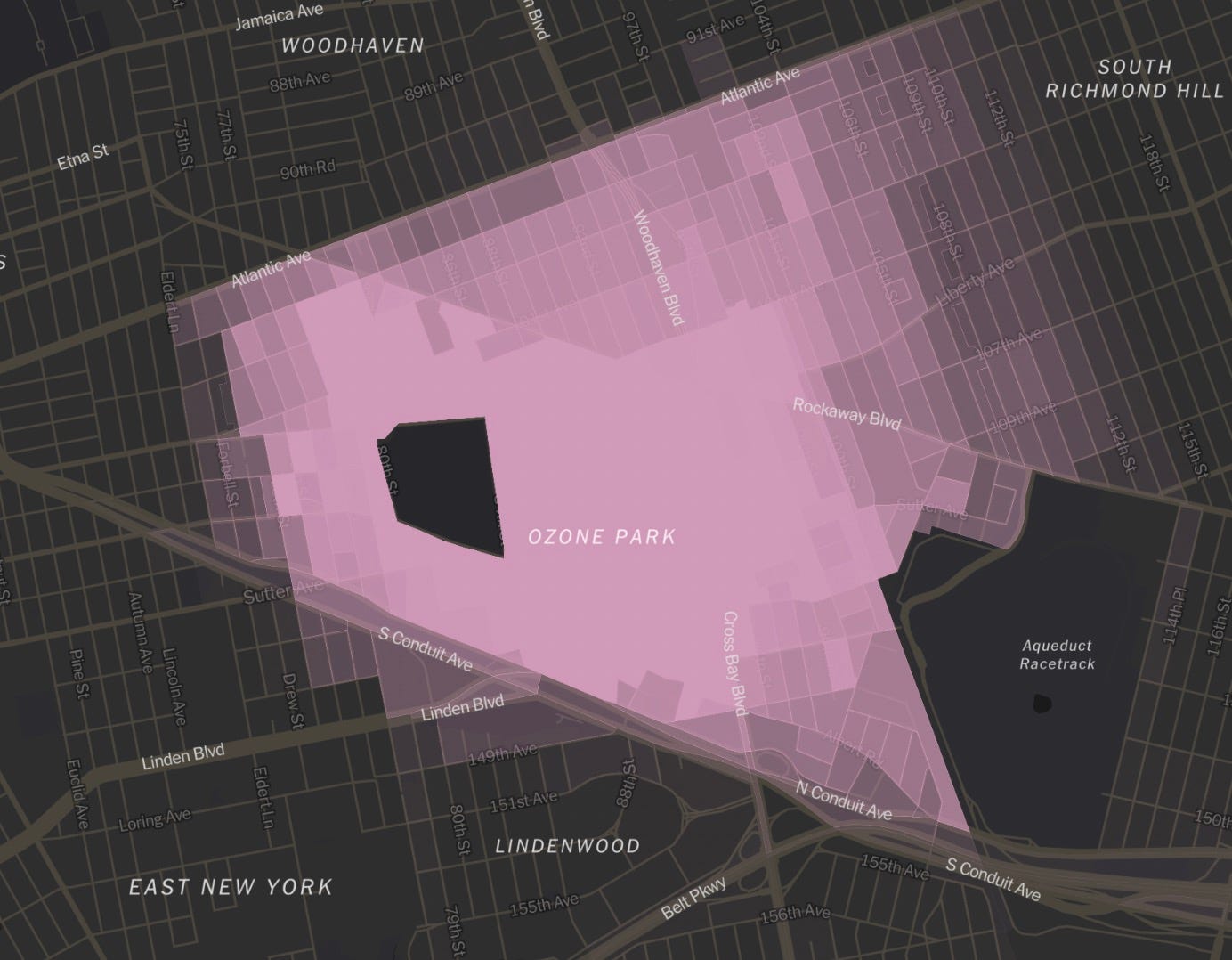
THE HARLEM OF BROOKLYN
According to the Centers for Disease Control, ozone is a “colorless to blue gas with a pungent odor. Exposure to ozone may cause headaches, coughing, dry throat, shortness of breath, a heavy feeling in the chest, and fluid in the lungs.”
If you were around in the 1980s, the word ozone was inextricably linked with the word hole. Back then, the rapidly growing hole in the ozone was an existential threat, portending a dramatic rise in skin cancer and global temperatures that dominated the news cycle.
Too much ozone is bad for you; too little is worse.
While today the name Ozone Park would not make it past the first round of a focus group, in 1880 the phrase “taking the ozone" was shorthand for basking in the restorative sea air. Two developers, Benjamin Hitchcock and Charles Denton, deemed it the perfect name for their newly purchased and subdivided farmland, bathed in the salubrious breezes of the nearby Atlantic Ocean.
Hitchcock and Denton were counting on the railroad’s pending expansion into the area to attract inhabitants of Manhattan’s overcrowded tenements.
An ad exhorted would-be residents to save their children and invest and get rich in the malaria-free ocean air of the “Harlem of Brooklyn,” a spin that makes a little more sense when you know that Queens wasn’t a borough until 1898 and, at the time, Harlem was an up-and-coming, predominantly Jewish and Italian neighborhood serviced by a new elevated train line.
In 1863, Florian Grosjean and Charles Lalance opened a stamped-tin factory on Atlantic Avenue. Houses, schools, and churches for the over 2,000 factory employees soon followed, helping spur the neighborhood's growth.
When Brooklyn Rapid Transit extended its service in 1915, and it was possible to commute to Manhattan for a nickel, Ozone Park really started to grow. The last big construction boom began in 1925 with the completion of Cross Bay Boulevard, extending Woodhaven Boulevard at Ozone Park over Jamaica Bay to the Rockaways.
The Wizard of Ozone Park
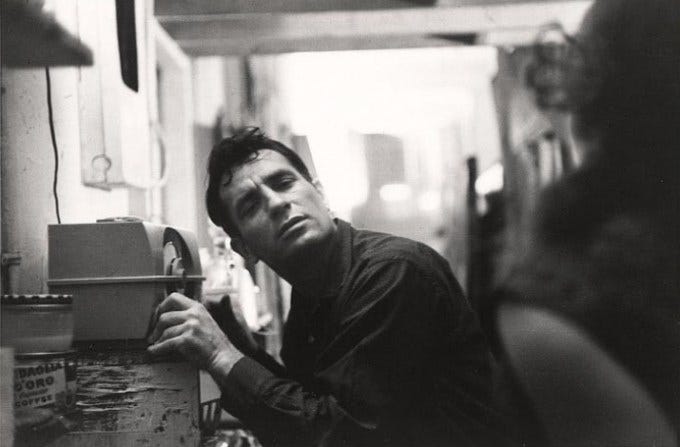
In 1943, less than twenty years after its completion, Jack Kerouac, one of America’s most celebrated authors, moved into a second-story apartment overlooking Cross Bay Boulevard. Kerouac, recently discharged from the Navy for his "indifferent character" and a diagnosis of "schizoid personality," moved in with his parents and began working as a soda jerk in Sam’s Drugstore directly below their apartment. Between pulling egg creams and Brown Cows, he would use the phone booth to talk to Neal Cassady and Alan Ginsberg, who gave Kerouac the nickname “The Wizard of Ozone Park.” Kerouac wrote his first novel, The Town and the City, and began formulating his plan for his masterwork, On the Road, in the apartment overlooking Cross Bay Boulevard. Today, Kerouac’s former residence sits above Spotlight Dance Factory, Inc.
That very house that sometimes rattles and is set on the edge of the world instead of Crossbay Boulevard.
In his writing, Kerouac frequently references the bar he could see from his window, where he used to hang out and drink with Cassady, Ginsberg, and sometimes his father.
Today, the bar, under new management, is called The Alibi, which incidentally shares a name with the bar I can see from my bedroom window in Brooklyn. Unfortunately for me, instead of getting to hear Kerouac beating out tunes on the out-of-tune standup piano in the corner of the bar, I’m subjected to peals of all-night drunken laughter that make a mockery of my white noise machine.
In 1950, Kerouac moved to the nearby Richmond Hill neighborhood with his recently widowed mother.
THE TEFLON DON
The former Bergin Hunt and Fish Club at 98-04 101st Avenue was an infamous Gambino crime family hangout. It was here that John Gotti, the so-called Teflon Don, conducted business while playing hooky from his “salesman” job at nearby Arc Plumbing and Heating Company.
Gotti had orchestrated the murder of Gambino boss Paul Castellano in 1985 and assumed the role himself. Under his leadership, the Gambino family was considered America’s most powerful mafia family.
The annual 4th of July barbecue and fireworks show that Gotti organized was legendary and endeared him to his Ozone Park neighbors. He was credited with keeping the neighborhood clean and crime-free.
''You see all this graffiti?'' said JoyceAnn Domenico, gesturing at a brick wall on 101st Avenue. ''We would never have had this if he were here.1
I came across this pilot from an early ‘90s show called Spy TV Pranks that visits the Bergin Hunt and Fish Club. Hosted by a not-so-funny Kevin Nealon of SNL fame, you can see why the show never got picked up. Still, it’s hard to find fault with the premise of a clown wearing a bulletproof vest attempting to deliver a balloon-gram to John Gotti. The clown should’ve gotten an Emmy nod for his performance…probably witness protection, too.
The Gambinos supposedly abandoned the club in 2005, three years after Gotti died in prison, and the building has since been divided up.
It is currently home to a church and Tea Mania, a bubble tea spot that promises “something that will start you off on the right foot and delight your taste buds.” The fact that Yelp reviewer Selena G felt safe enough to leave a one-star review stating, “everything is from jars or frozen package with hair included” should be evidence that the space is no longer affiliated with the Gambino crime family.
On the other hand, after a very active Yelp history, Selena G has left exactly zero reviews since her takedown of Tea Mania, so maybe the Gambinos have moved into bubble tea and croffles.
BLUE HOUSE
Someone who may have enjoyed a blueberry croffle had they been around in her time was Elsie Miller, an Ozone Park icon whose penchant for the color blue and telling everyone they were going to hell made her something of a local legend. Mrs. Miller bought the house at 84-02 107th Ave in 1971 and soon became known for periodically painting the entire building in rather nontraditional colors: red, purple, gold, and a highly reflective silver usually reserved for radiators.
The color that stuck around the longest, though, was blue. Mrs. Miller painted and re-painted the whole exterior of the house, including the window grates in several shades of blue, an azure ombré that gradually faded to a pale turquoise at the top.
When she died, someone created a Facebook group called “R.I.P. Ms. Miller A.K.A. the Crazy Lady of Ozone Park.” The group’s nearly 4,000 members shared stories of how Mrs. Miller told them they would burn in hell, the different projectiles she aimed in their direction, and how she dyed her dog blue. Those brave enough to have snuck a peak inside described piles of evil spirit-warding garlic, gold crosses painted on the ceiling, and gallon containers of holy water on every stair tread. And lots and lots of blue.
The house, directly across from Bayside cemetery, has since been renovated with new windows and siding. When I visited on a recent Saturday morning, a phalanx of what I assume were Jehovah’s Witnesses, having knocked on the door of every house on the block, congregated on the corner outside of Mrs. Miller’s former home, undoubtedly unaware of the reputation of its previous inhabitant.
It was hard to believe that this house, with its tidy fence and two-toned siding, was once the neighborhood's most talked about home, and I wondered if I had the wrong address. Then, I looked down.
SIGHTS AND SOUNDS
This week’s field recording starts at a girl’s baseball game, detours past a lively sidewalk hang, and ends up under a tree so full of birds it feels vaguely Hitchcockian. Put on your headphones for the full binaural experience!
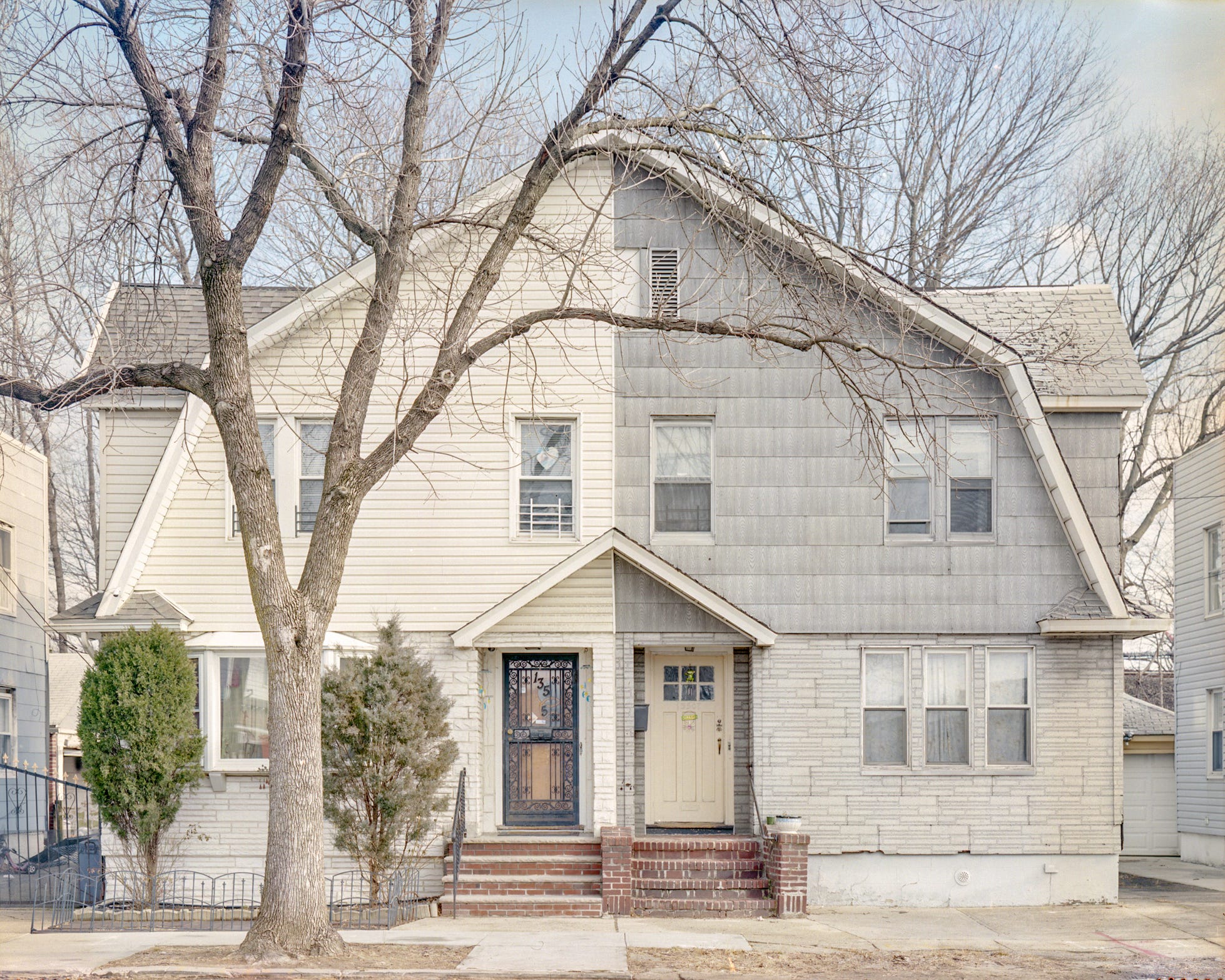
FEATURED PHOTOGRAPHER
I came across Katie Murray’s work when searching for a photo of the blue house of Ozone Park. While there were plenty of images of the house online, the one taken by Katie (featured above) jumped out. Such a beautiful image, with just a tinge of the surreal thanks to Mrs. Miller’s paint job. Following the thread led me to Katie’s project, All the Queens Men, a “decades-long photographic project that explores the rites, rituals, and relationships of men. Walking the fine line between fiction and non-fiction, All The Queens Men navigates the psychology of men through an exploration of portraiture and place.”
As someone much more comfortable taking a picture of a house than a person, I’m always in awe of someone who can make compelling portraits. Katie’s portraits have a mysterious quality to them, seeming to inhabit the same space as the desolate Queen’s landscapes they are situated in. Even though her work isn’t about Ozone Park in particular, Katie was nice enough to send me a selection of images taken in the neighborhood.
You can see the project and accompanying book, All The Queens Men, and the rest of her work on Katie’s website.
NOTES
I didn’t have a chance to eat in Ozone Park, but I’m still going to make a restaurant recommendation based on this video alone. Some of the finest acting you will ever see is in this Mia Halal Food commercial (Thanks to Gothamist for pointing it out).
How the ozone hole panic of the eighties was managed is a genuine success story showing that nations could work together to solve environmental concerns. This Scientific American video is a great explainer/reminder of the hole’s origins and the efforts to close it.
One of the city’s most interesting neighborhoods is the Hole, on the Brooklyn/Queens border. While it requires a separate newsletter, some consider it part of Ozone Park. I’m trying to think of a good Hole in the Ozone joke here, but it’s been a long week.
https://www.nytimes.com/2002/06/11/nyregion/ozone-park-journal-fond-tales-of-gotti-and-a-lot-of-no-comment.html




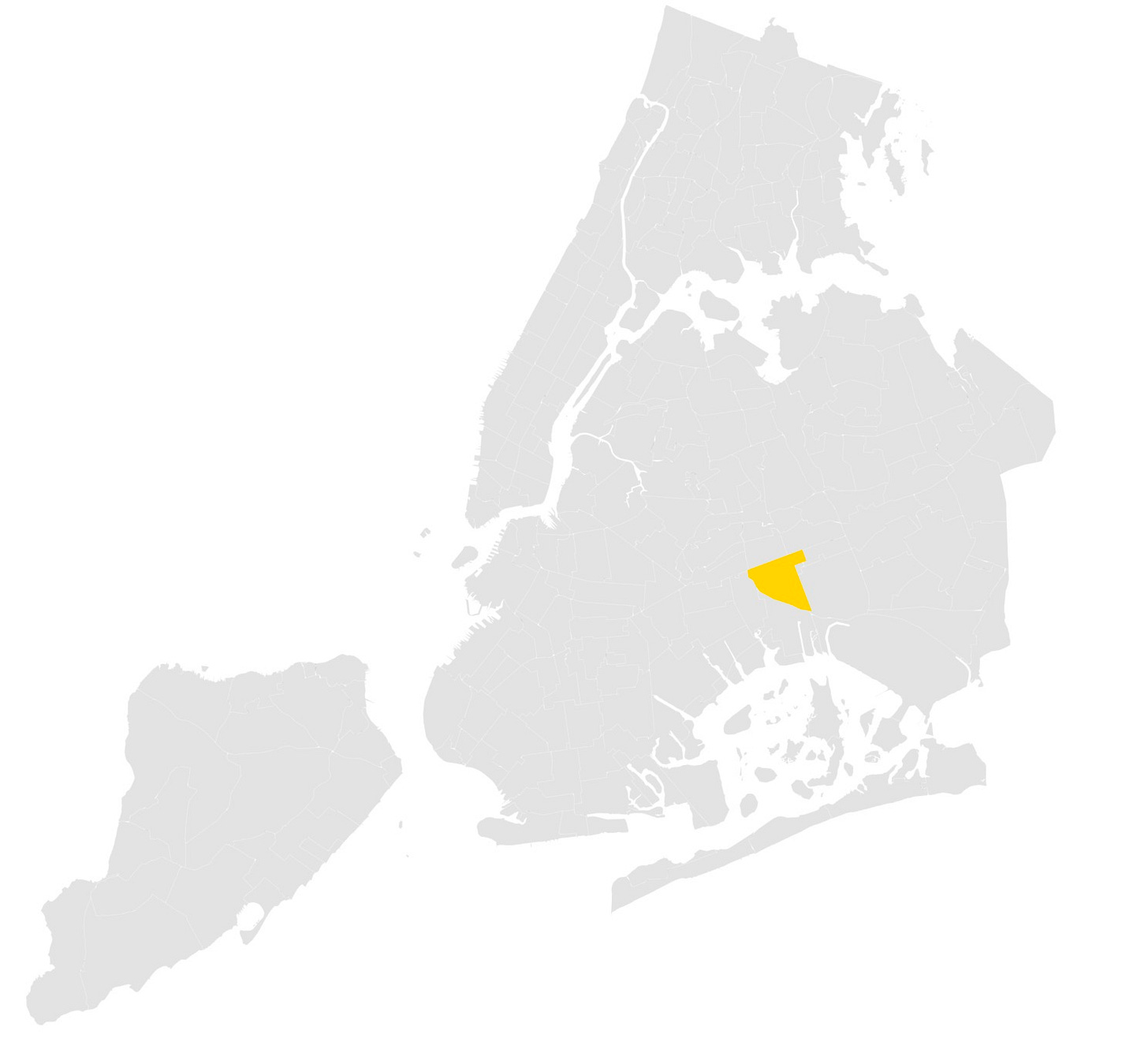
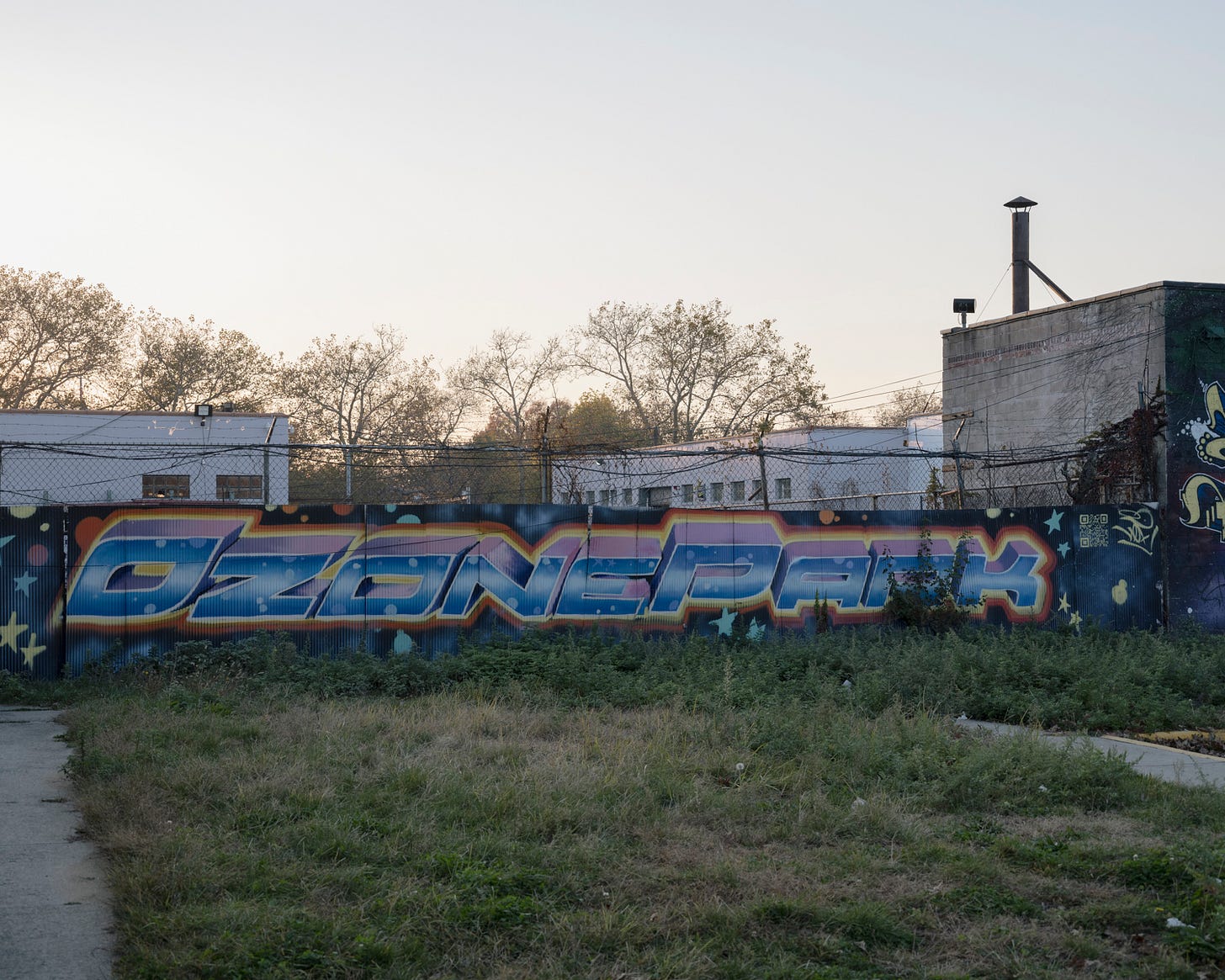
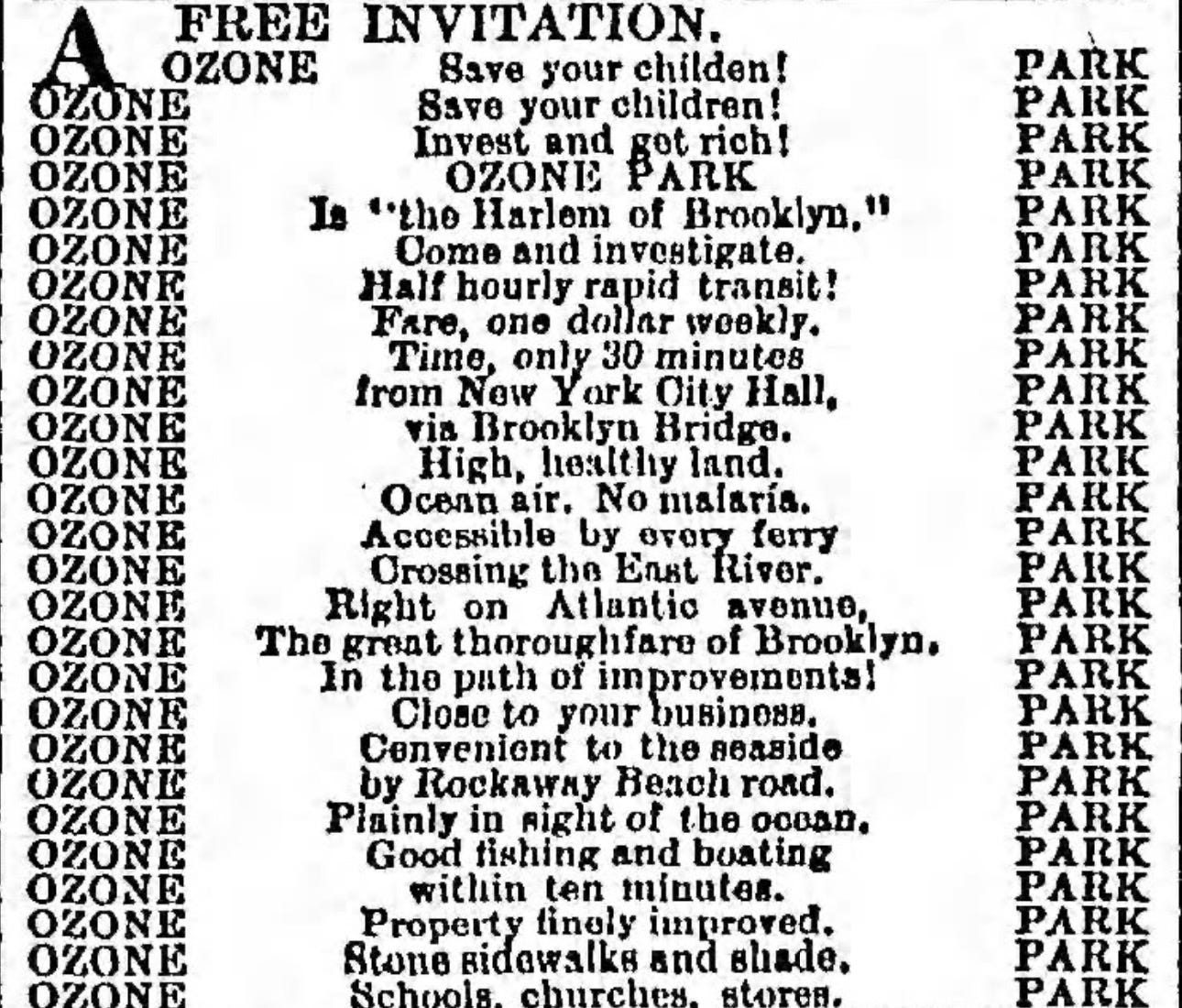
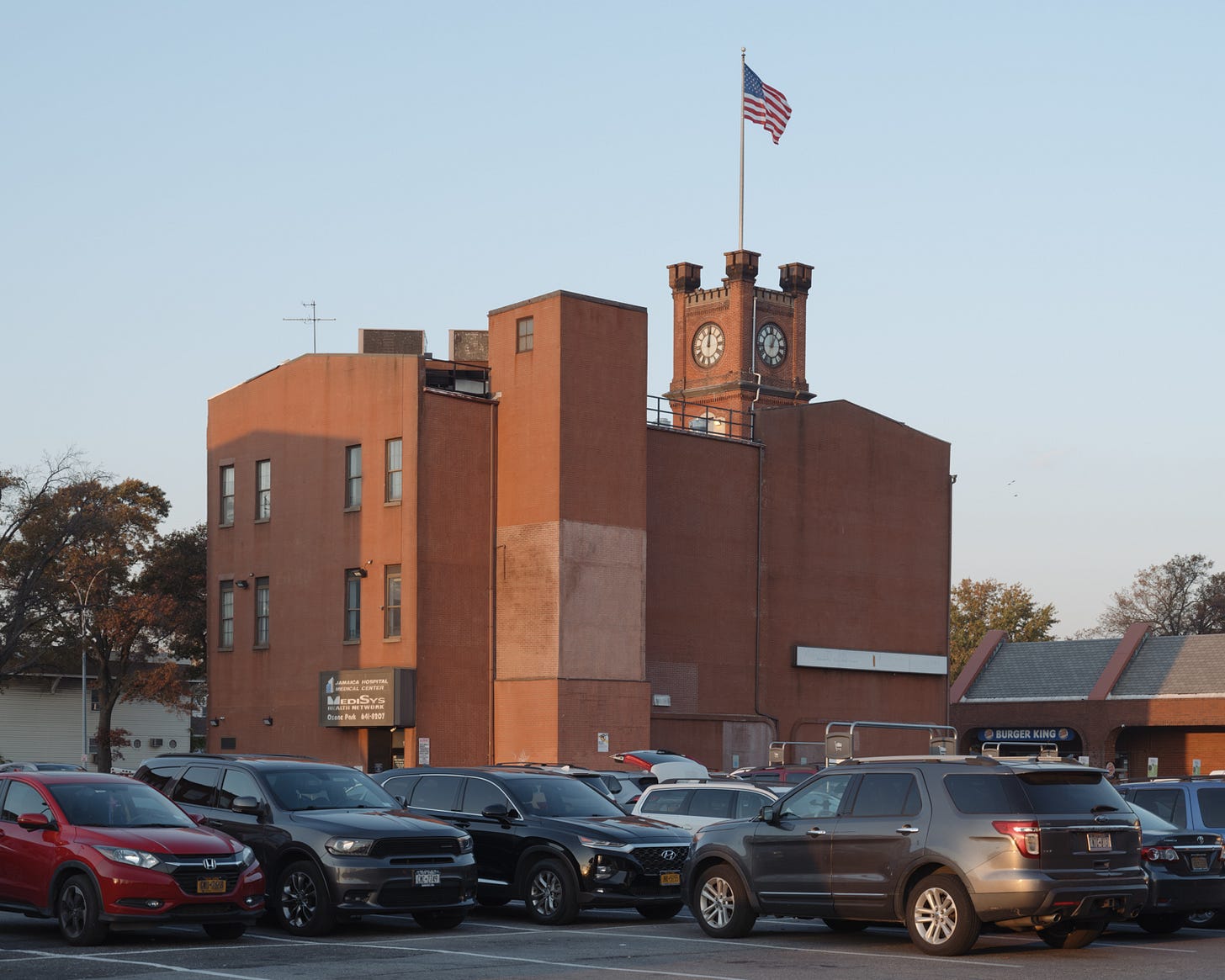
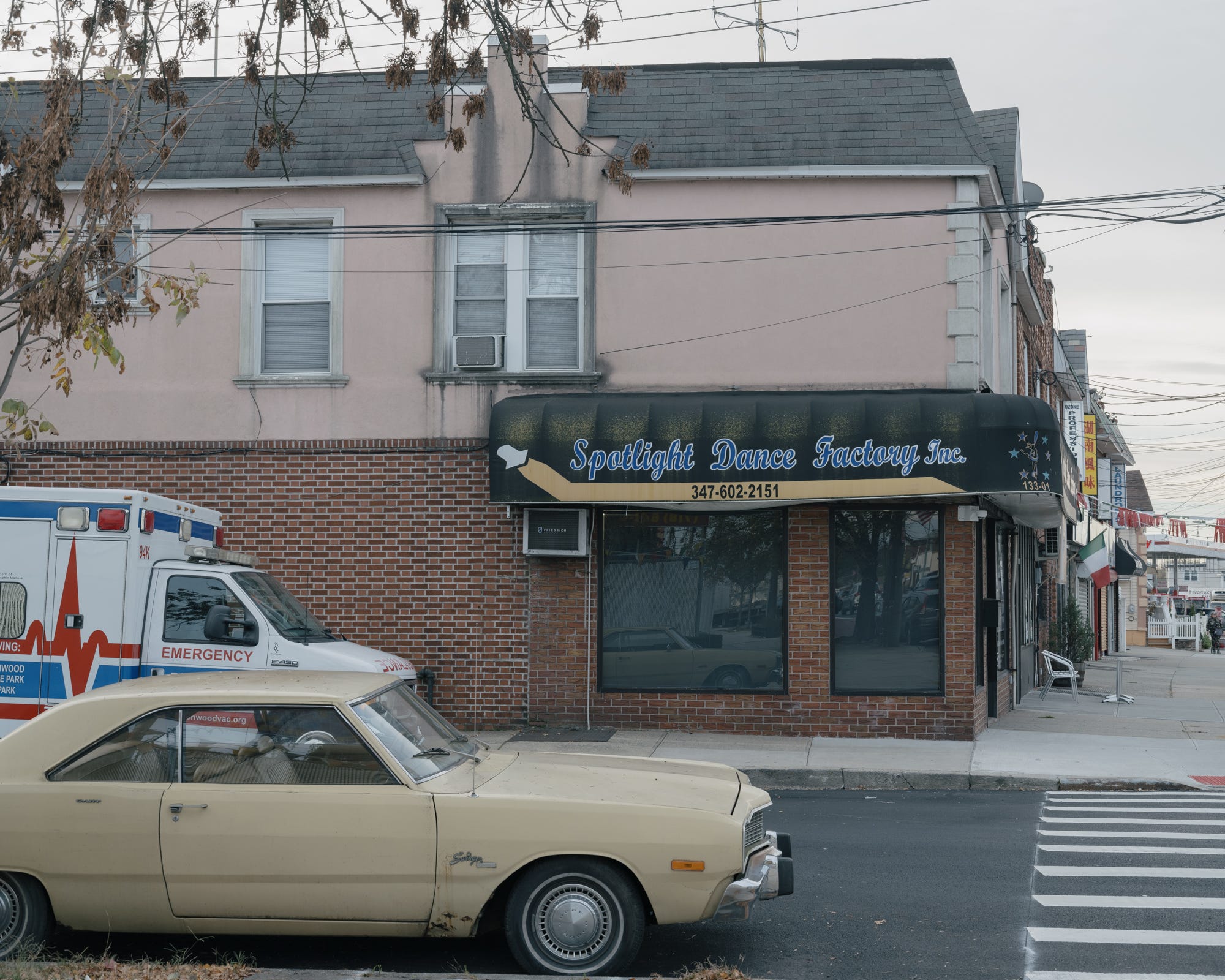
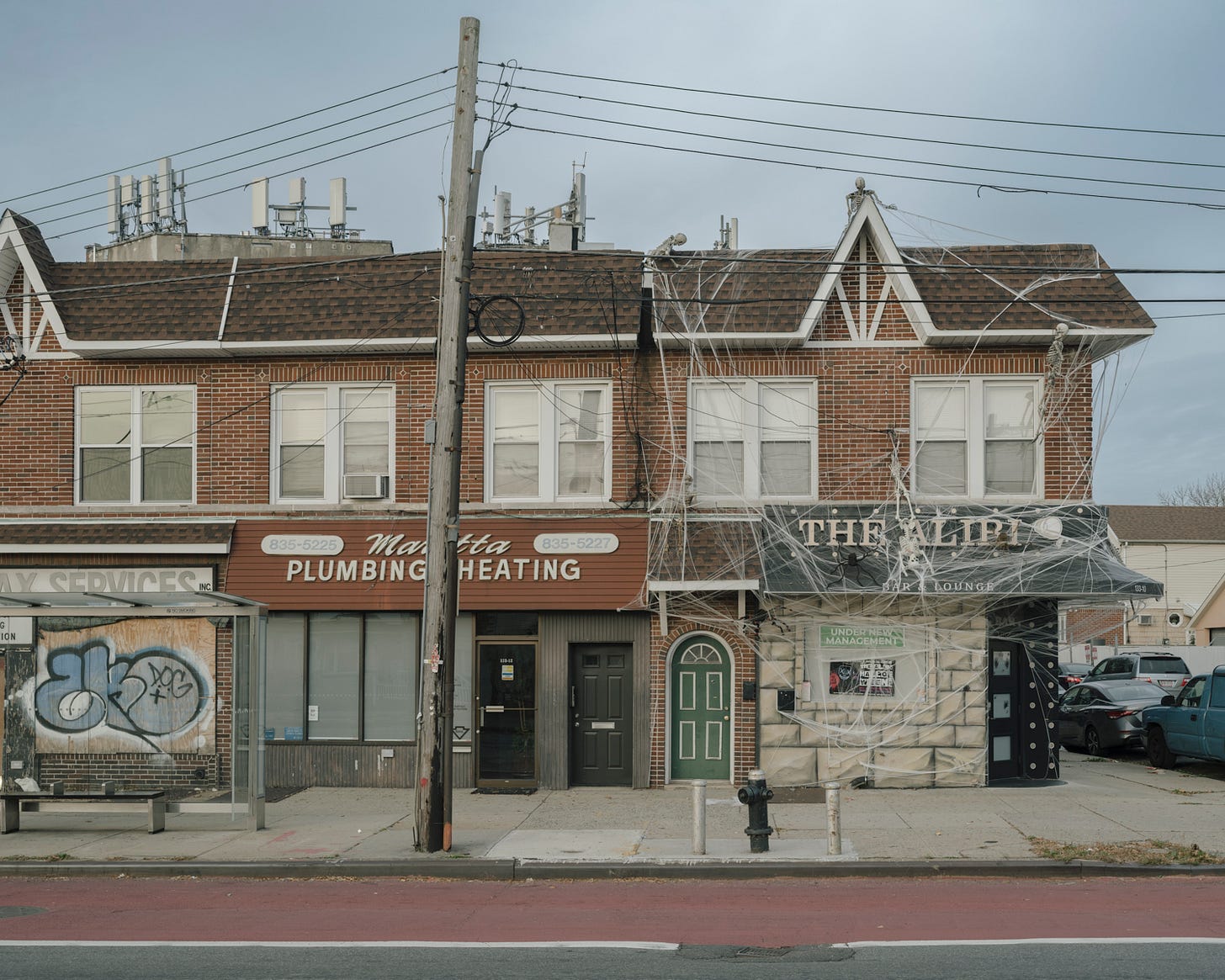
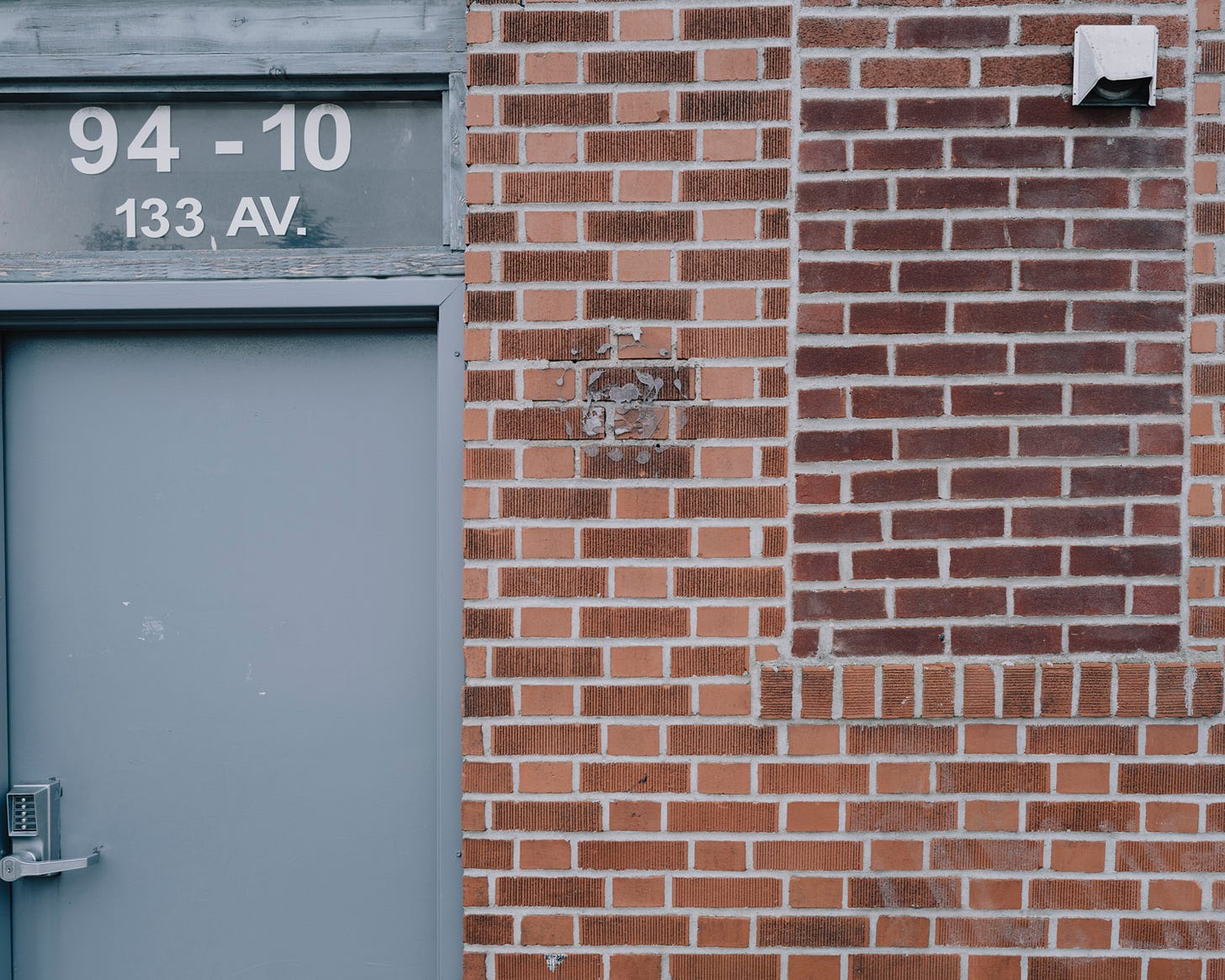
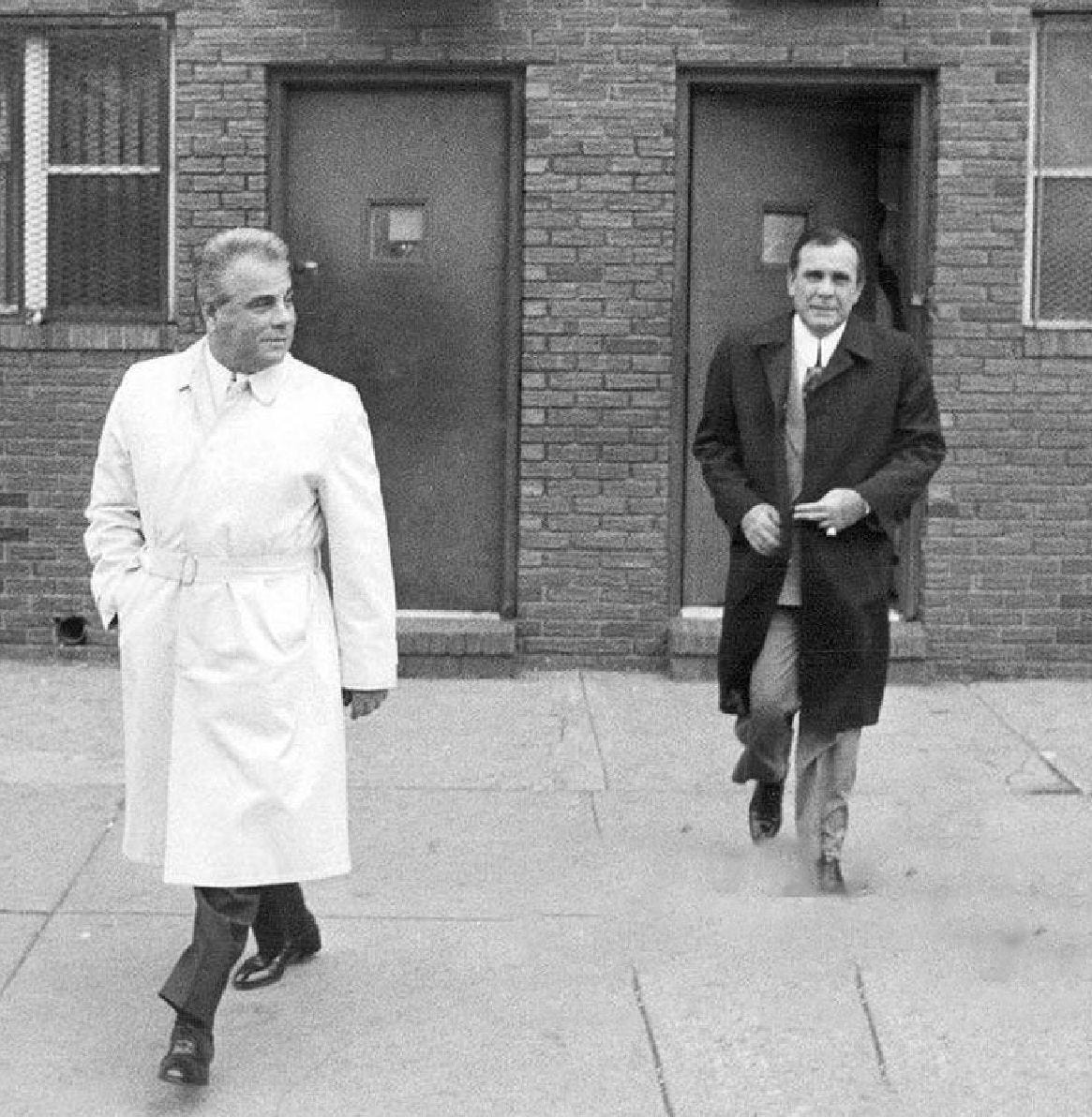
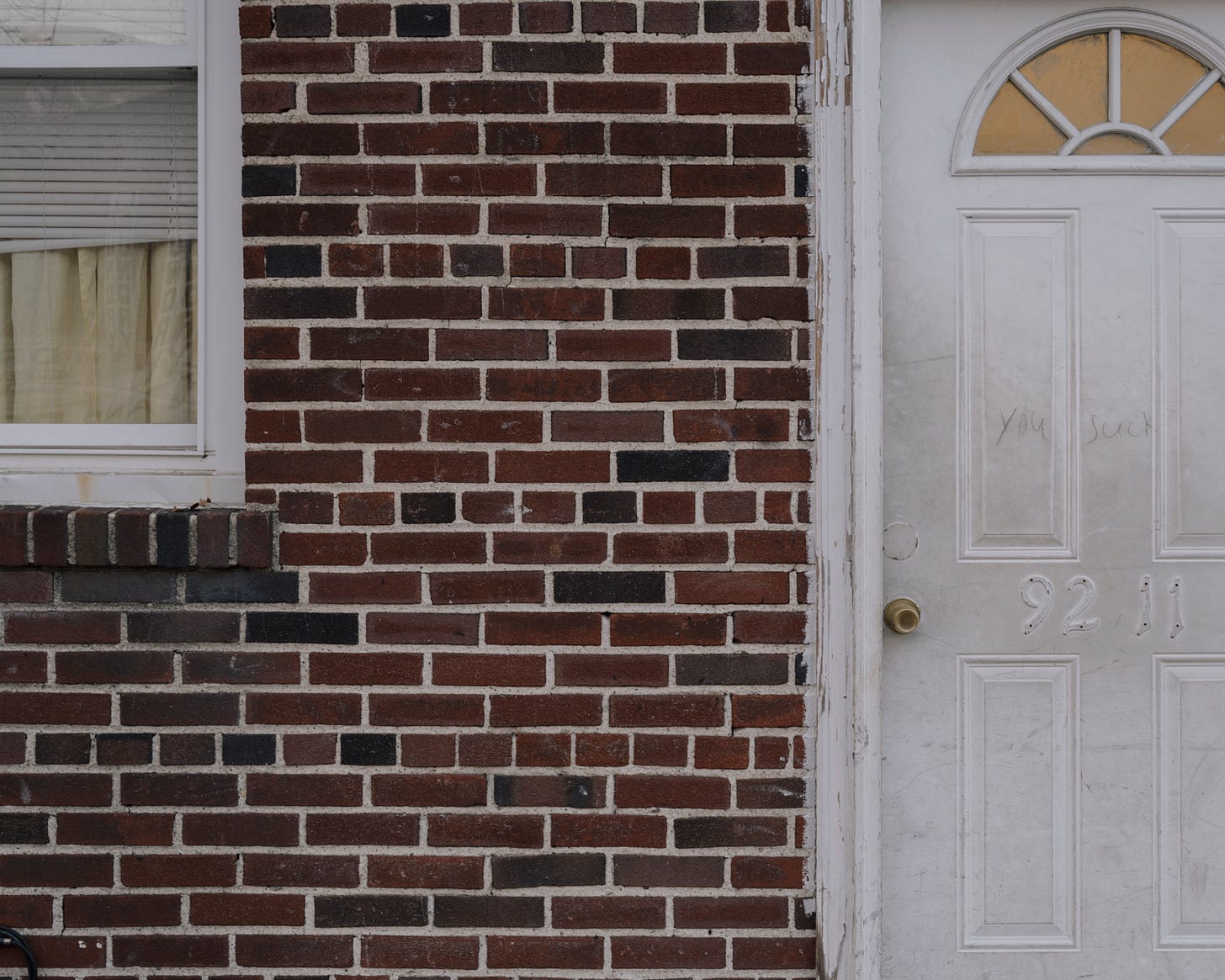

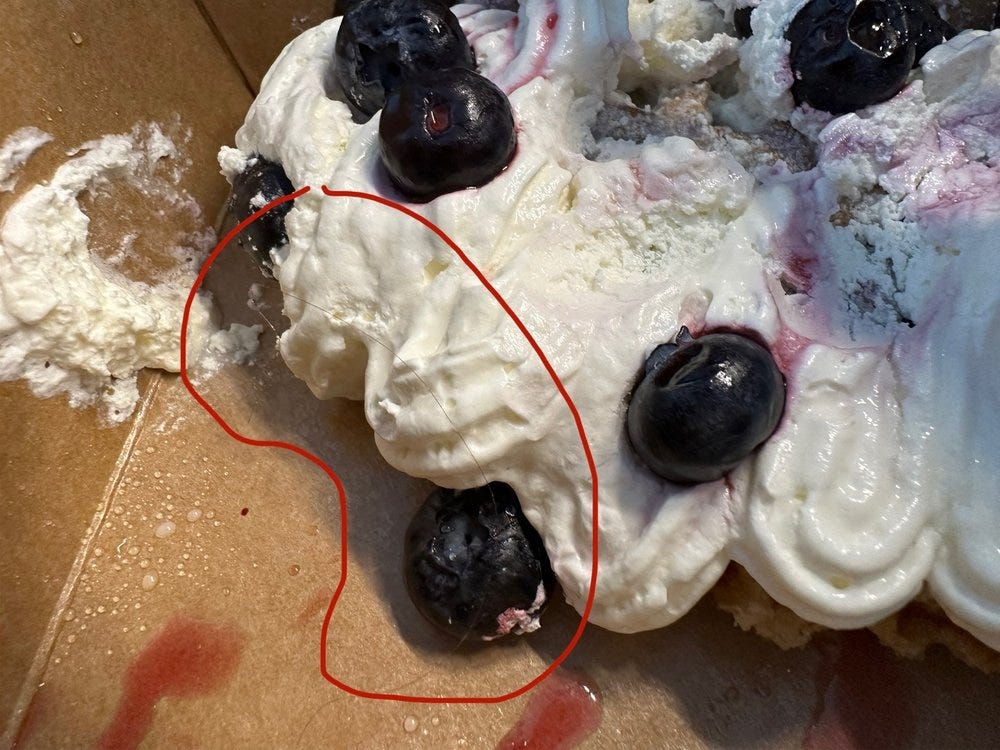
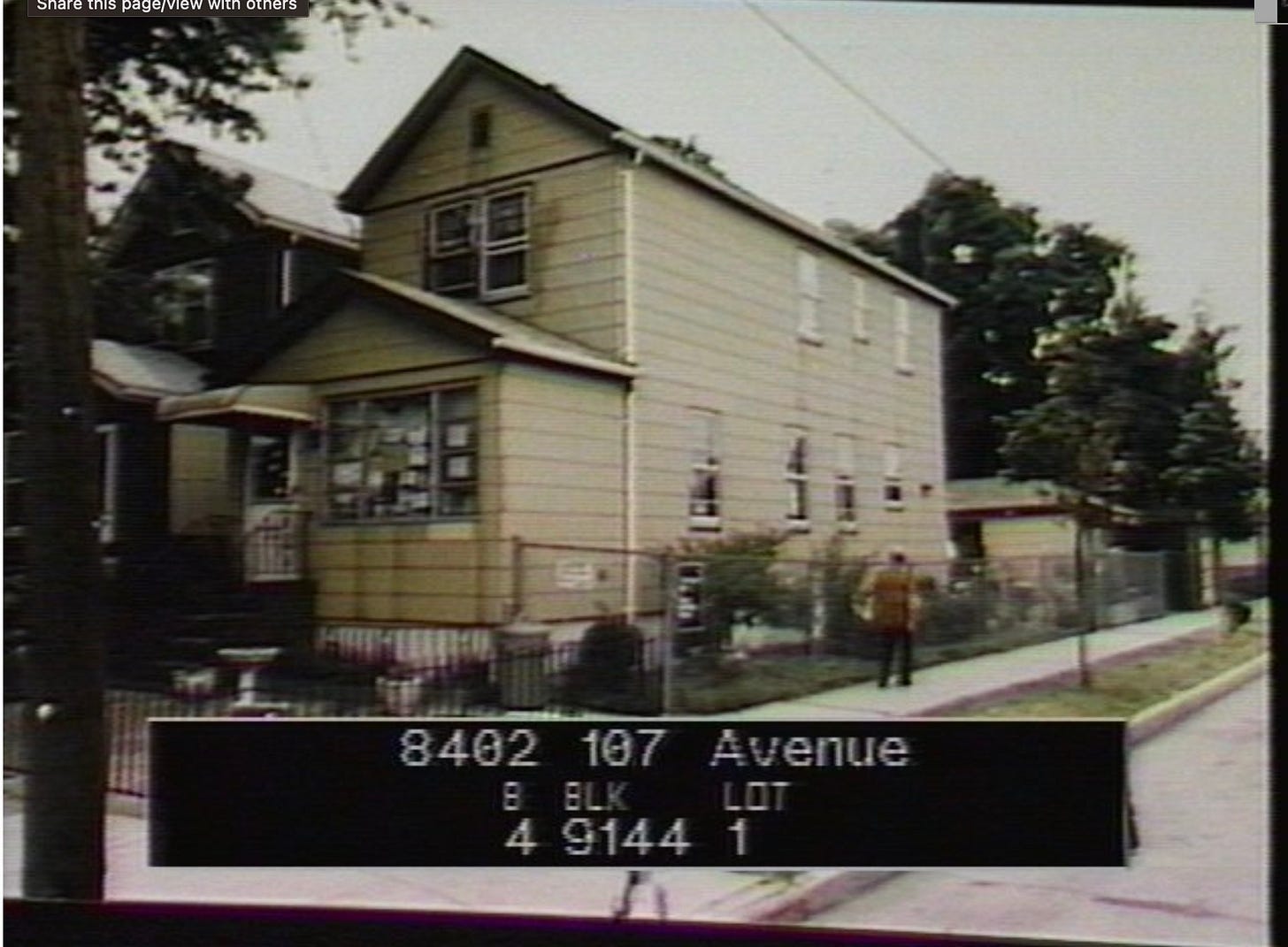
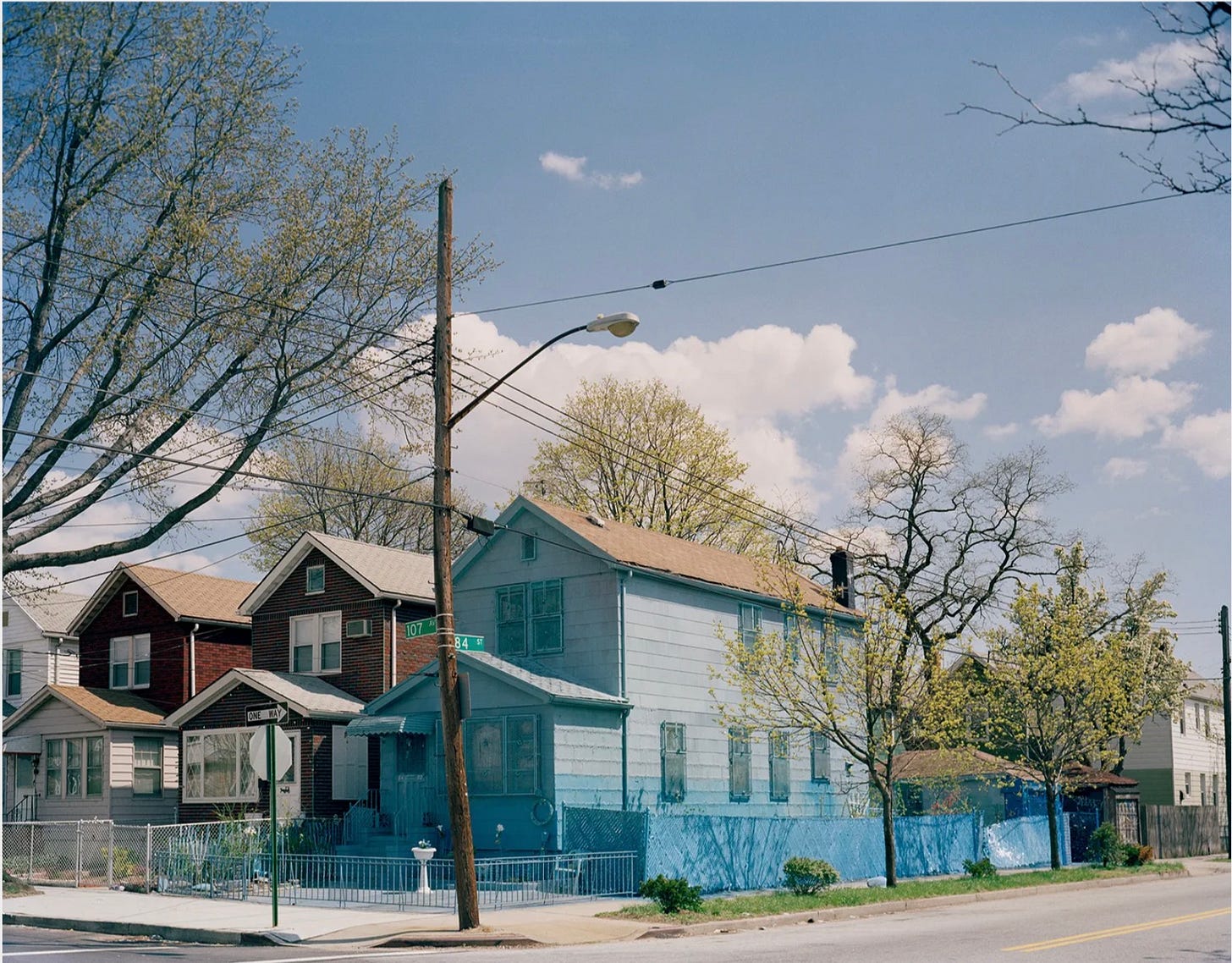
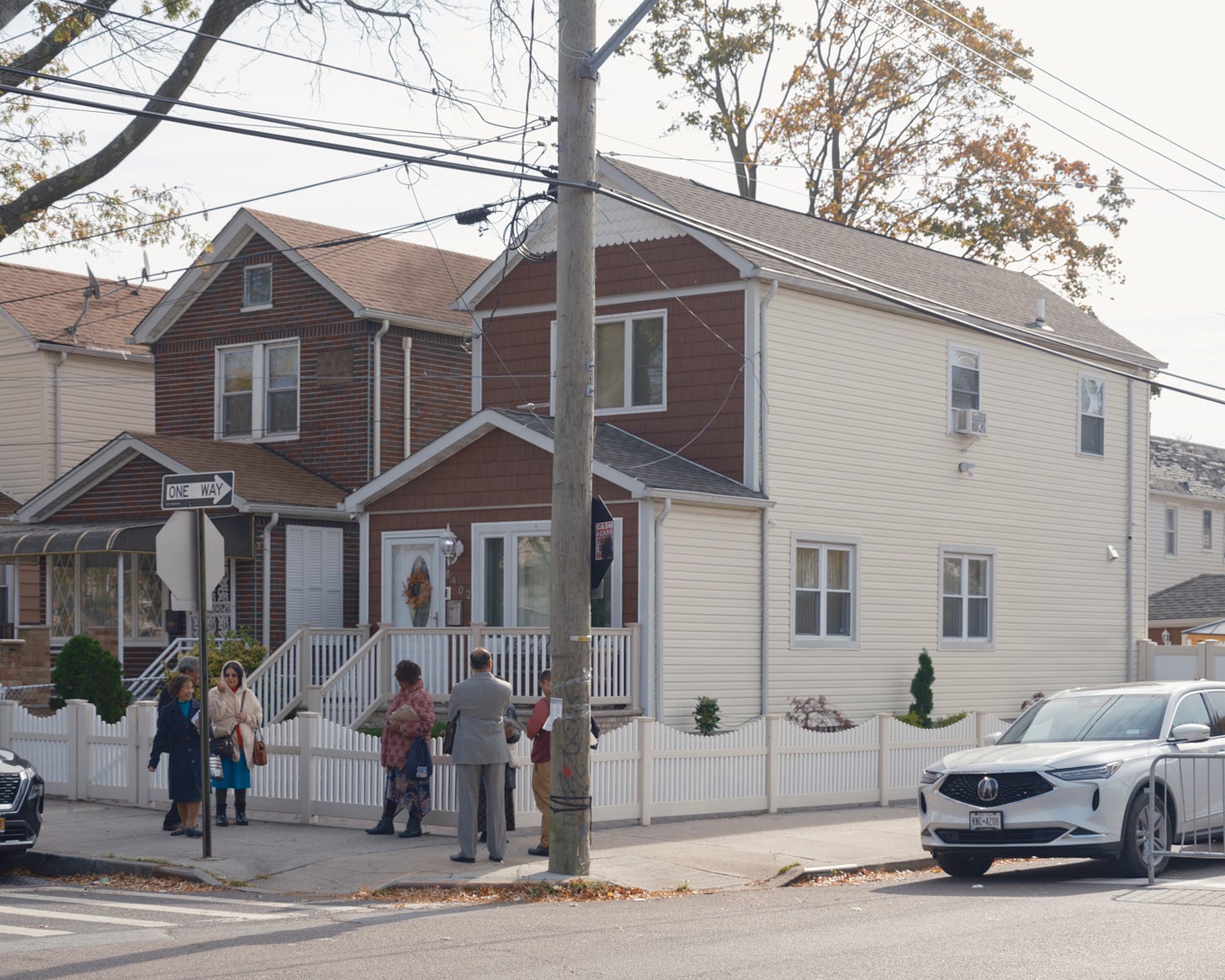
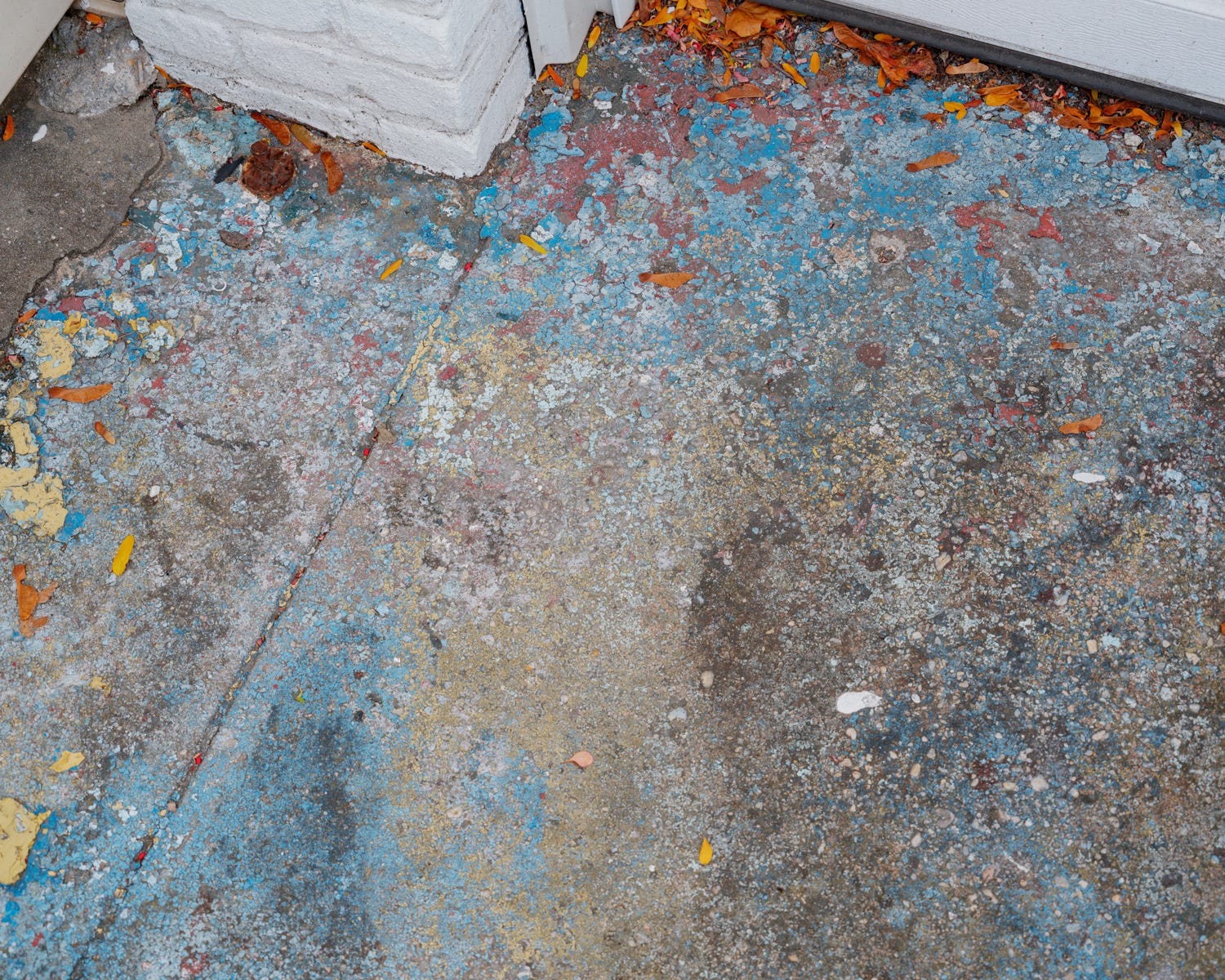
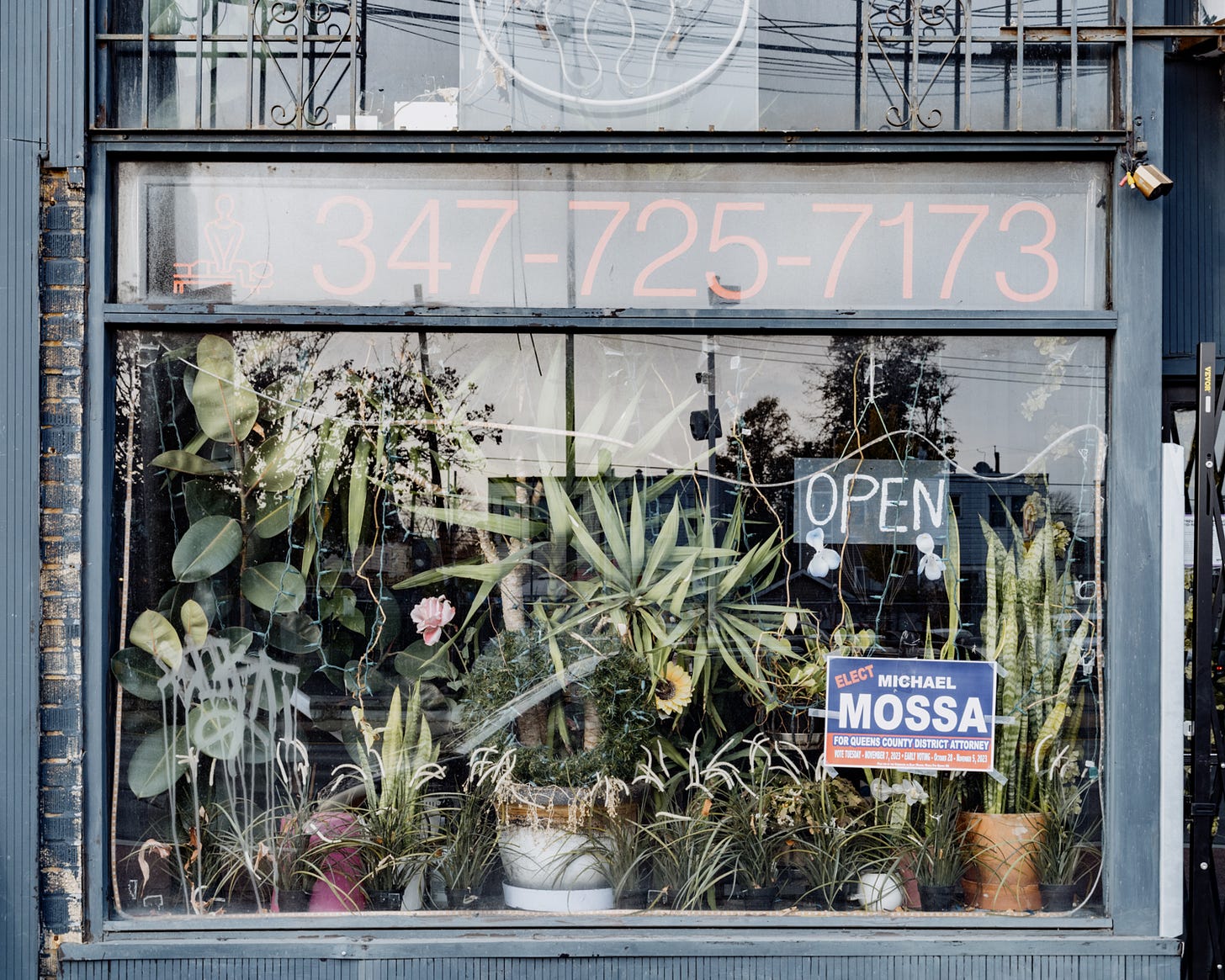
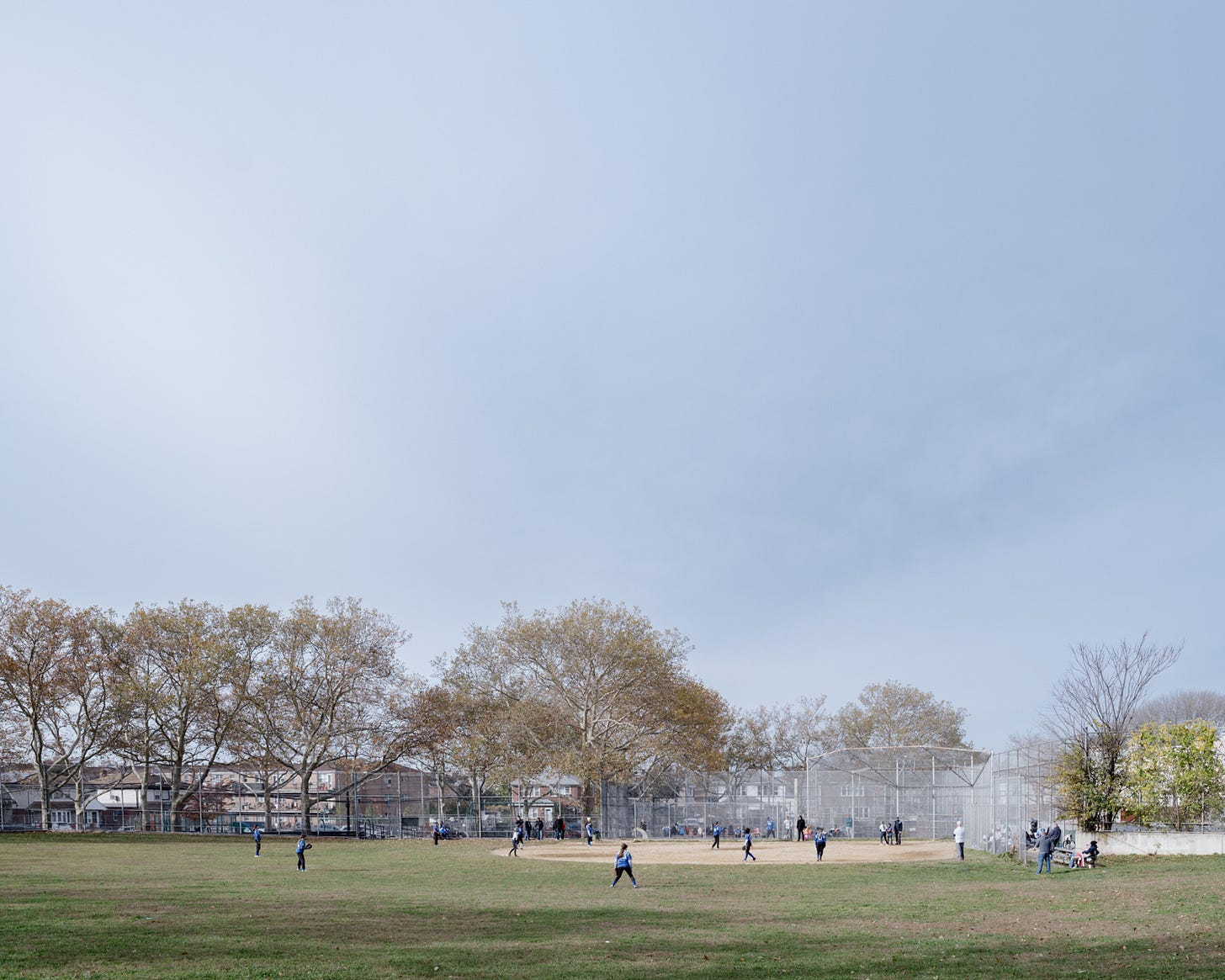
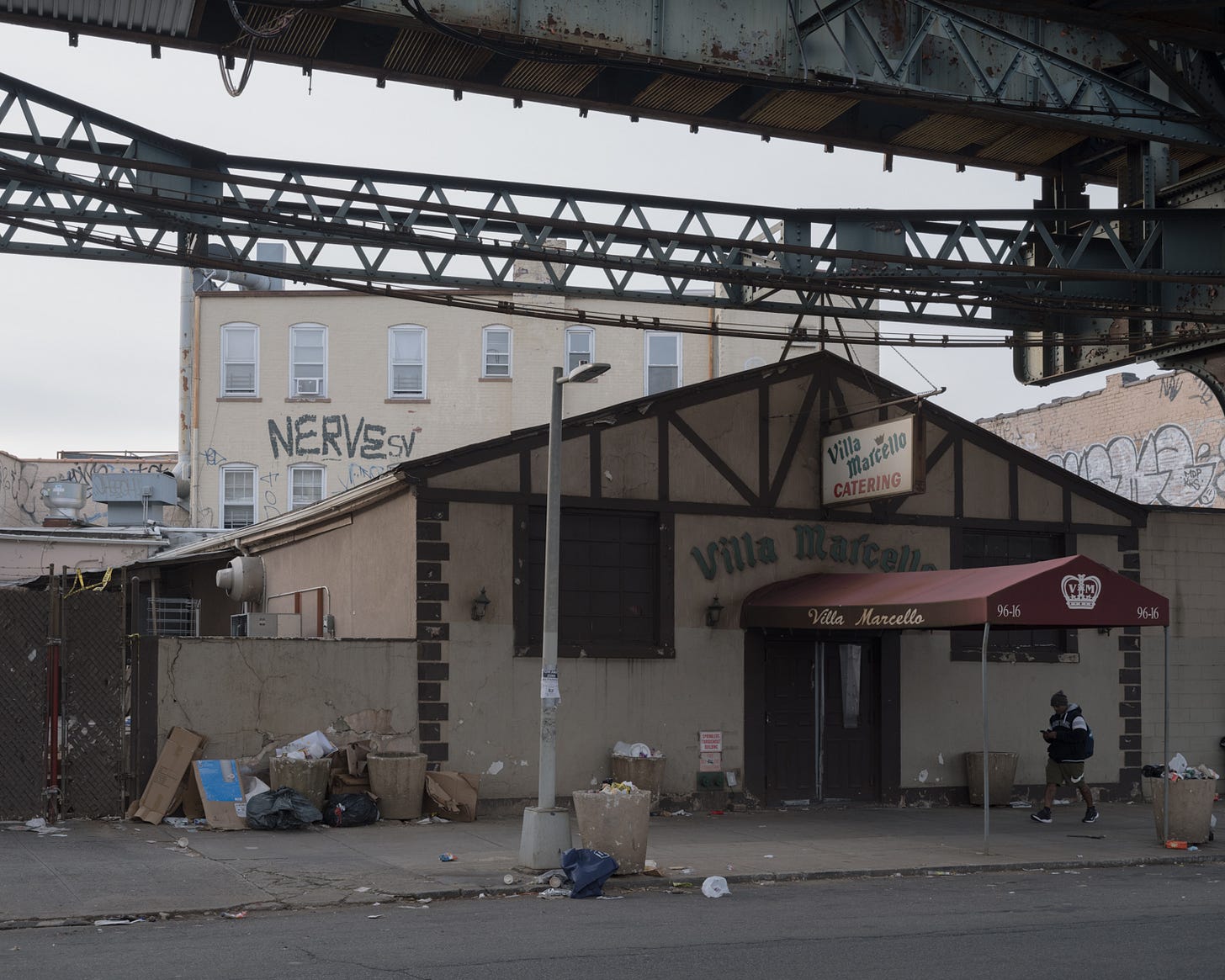
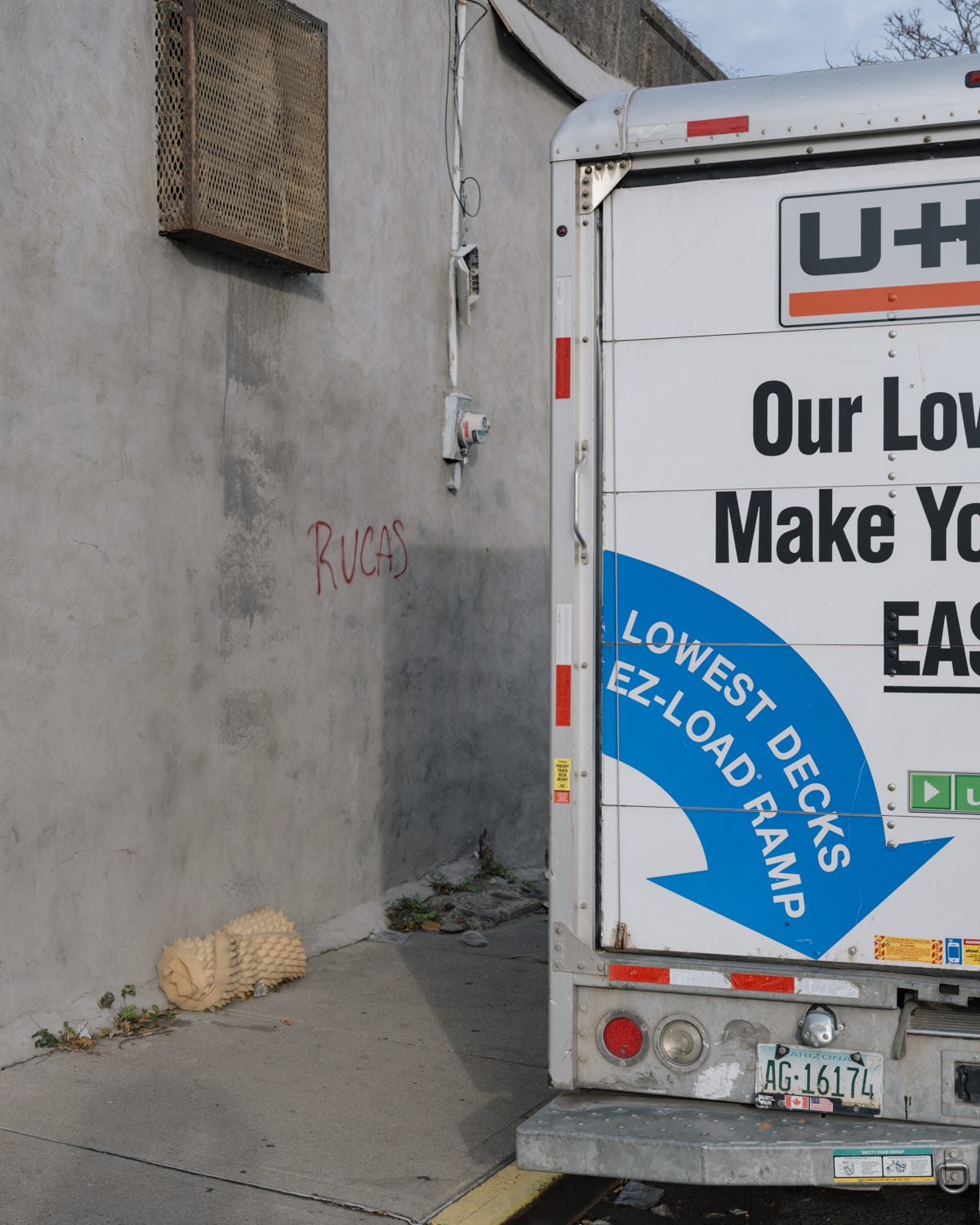
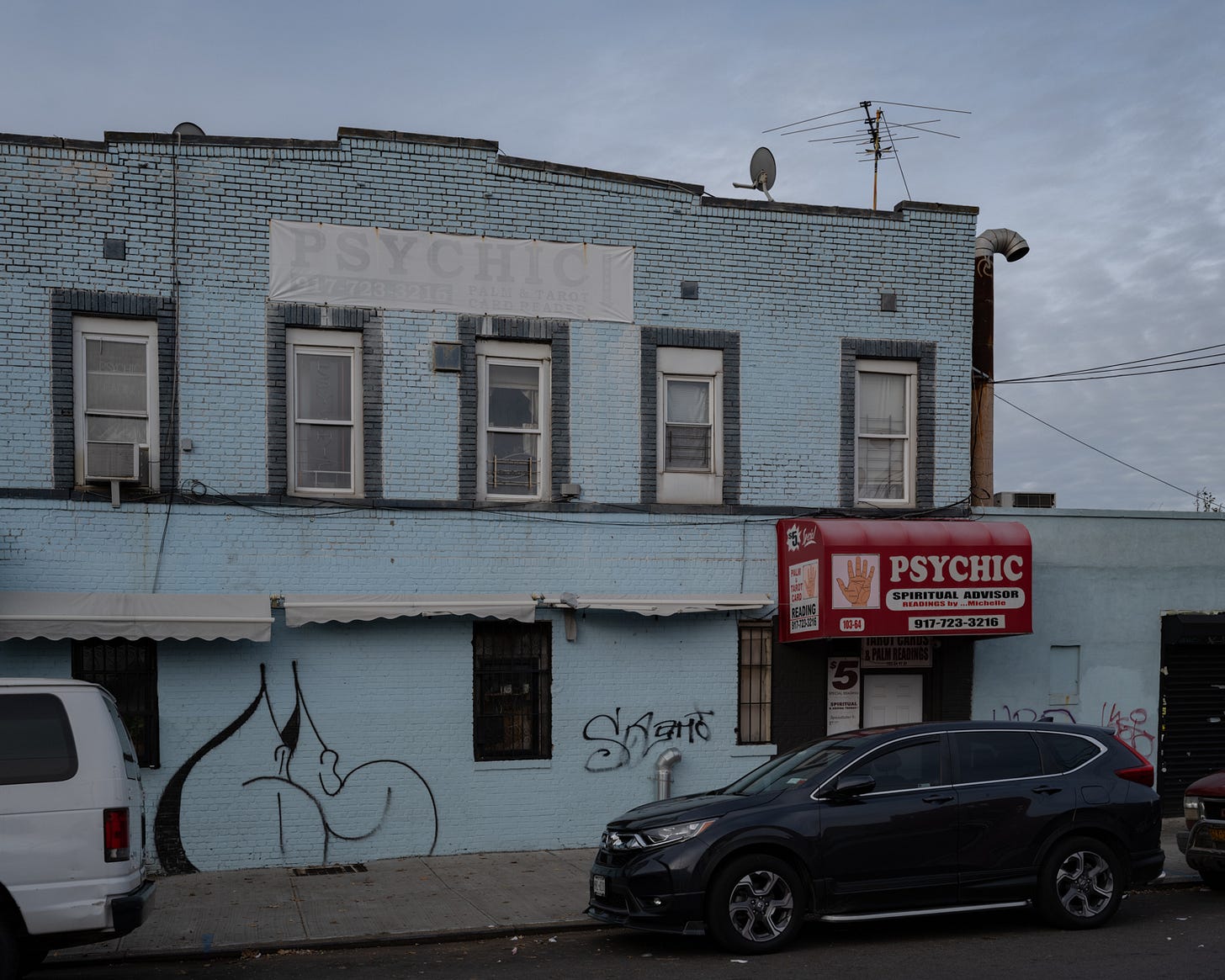
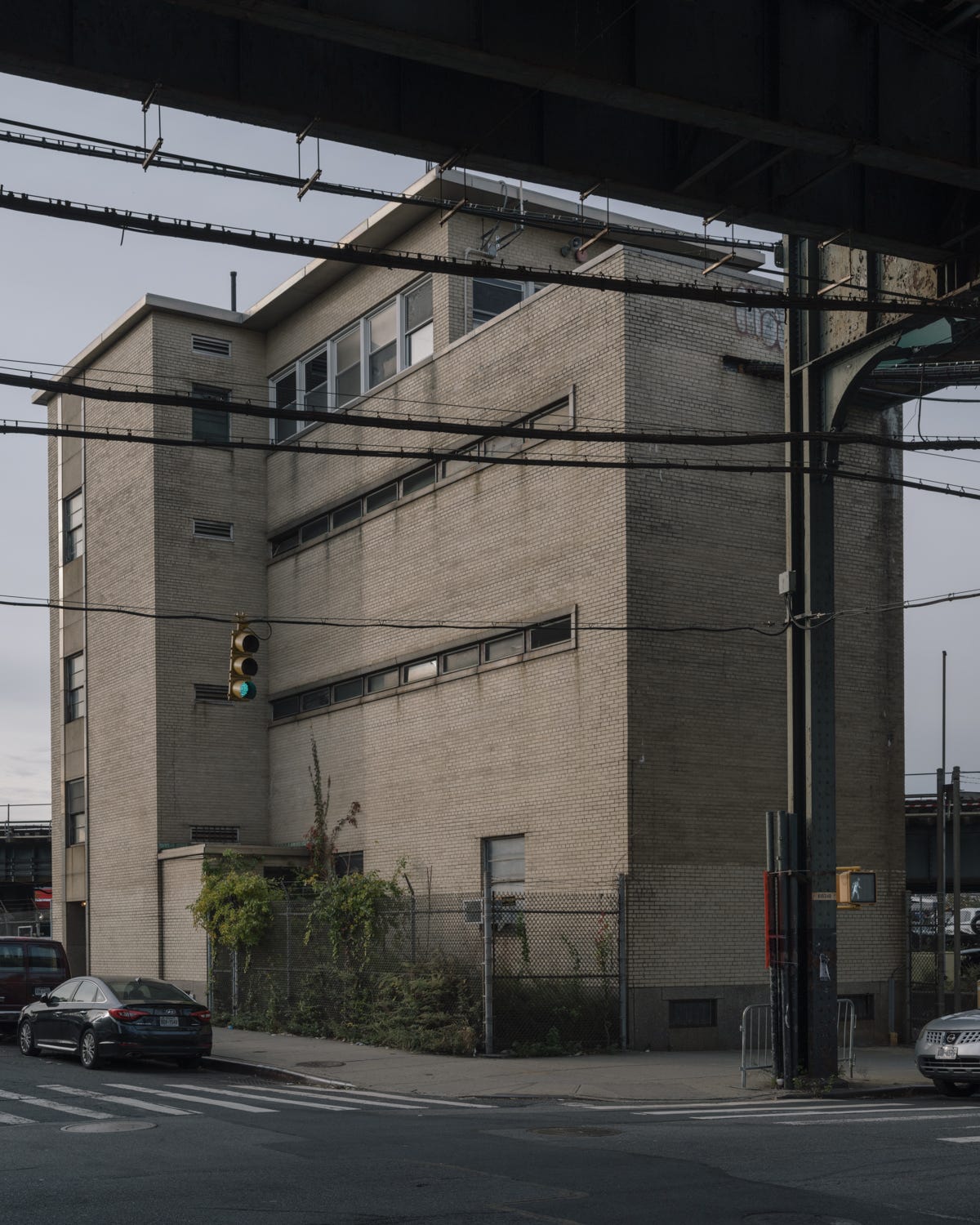
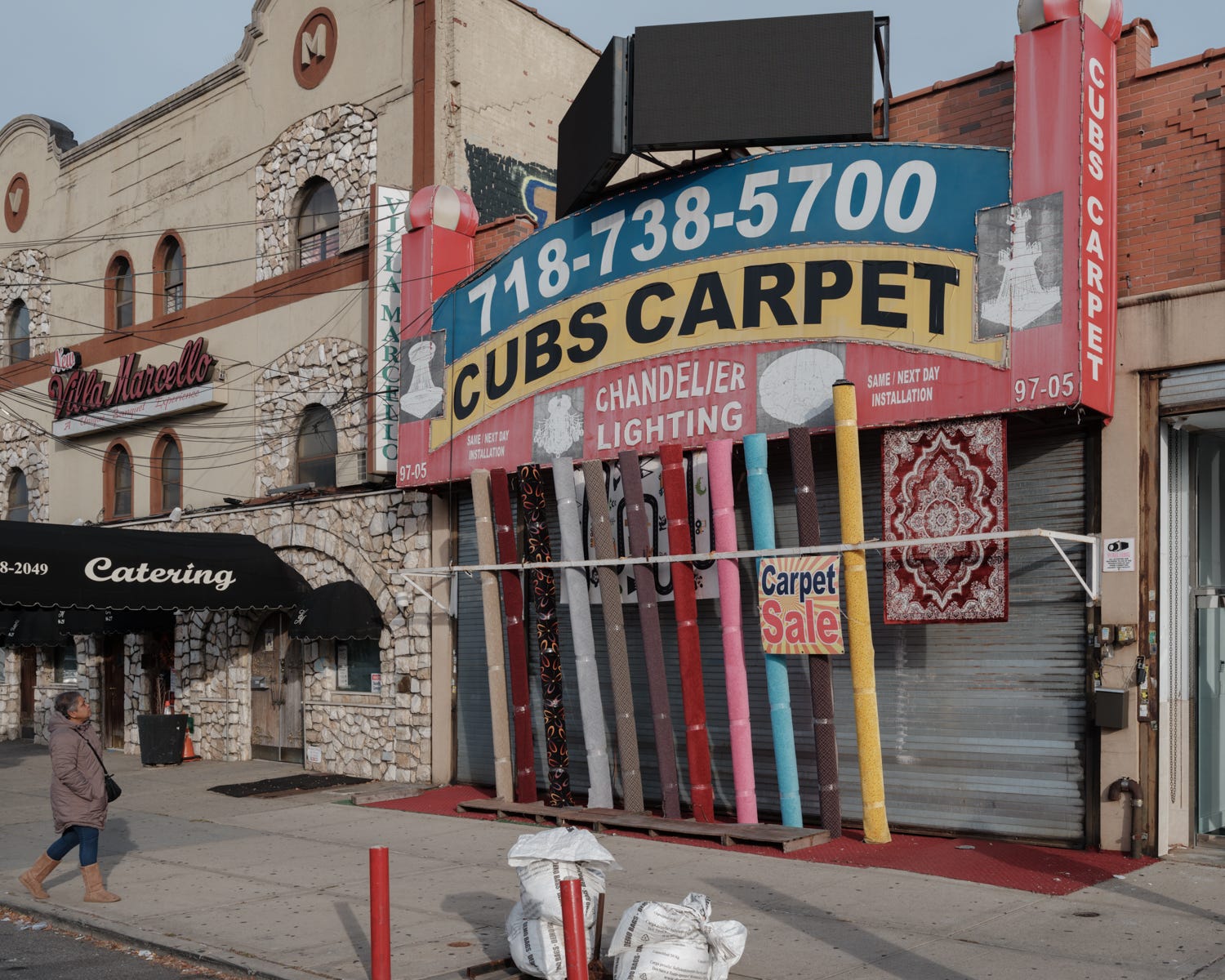
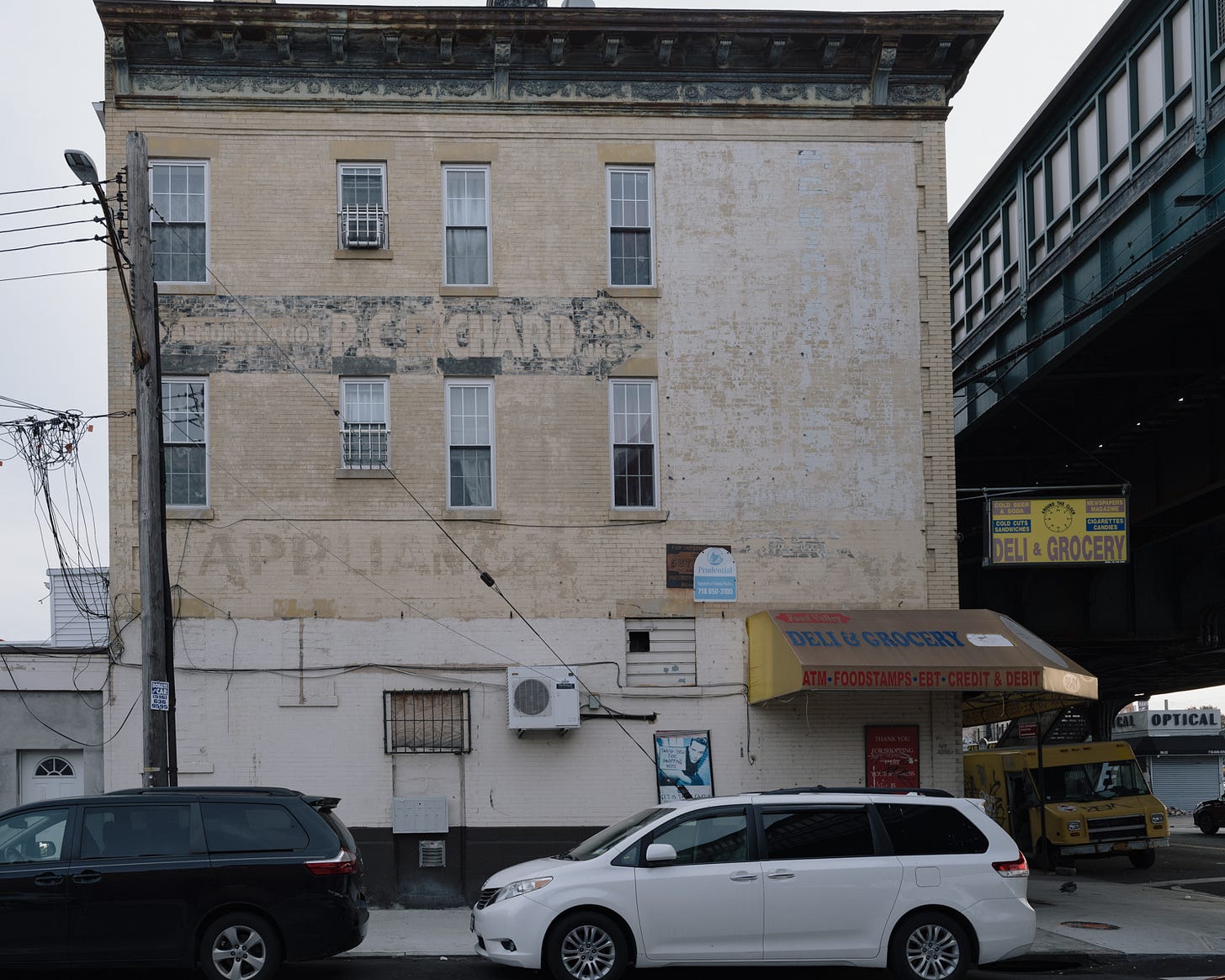
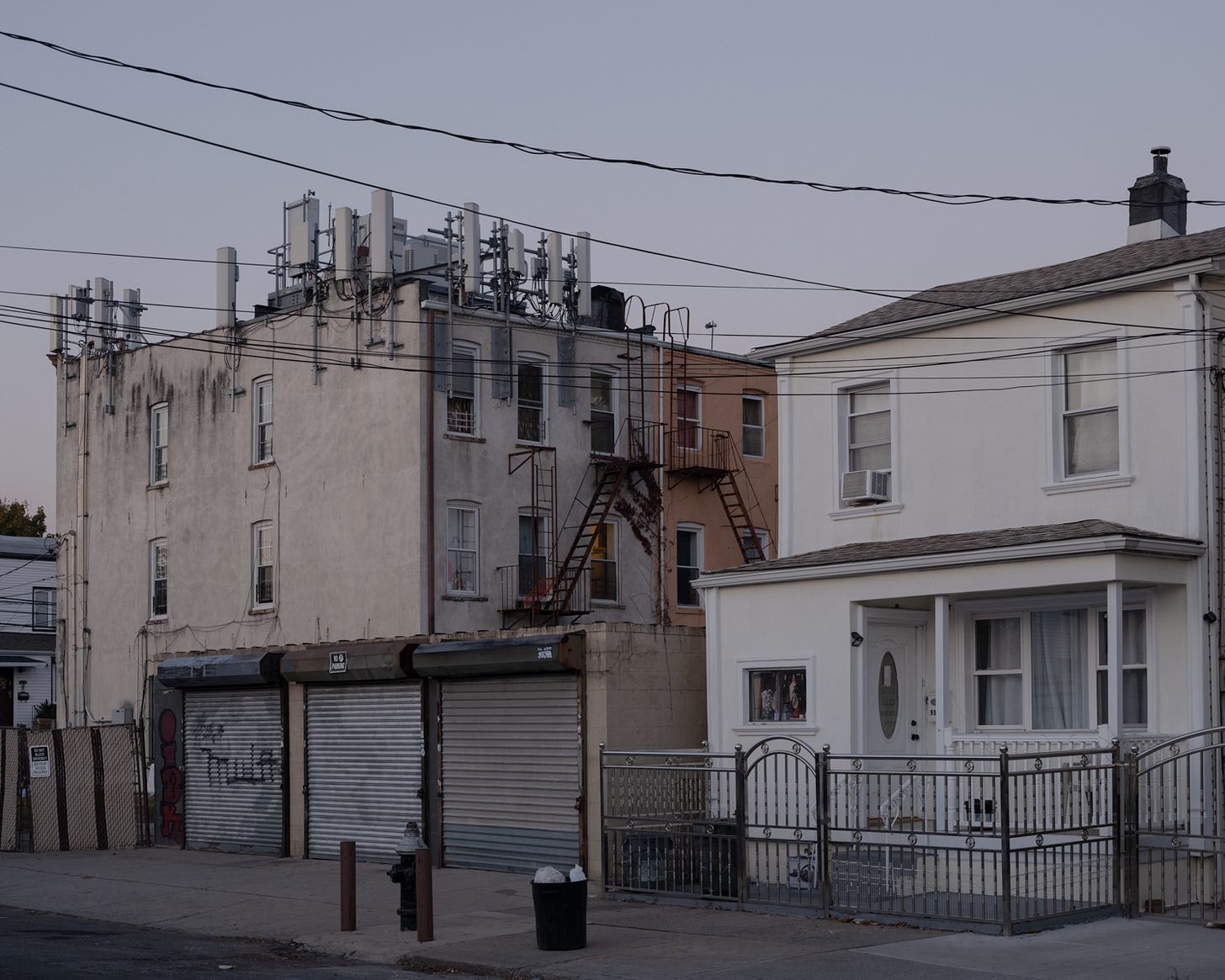
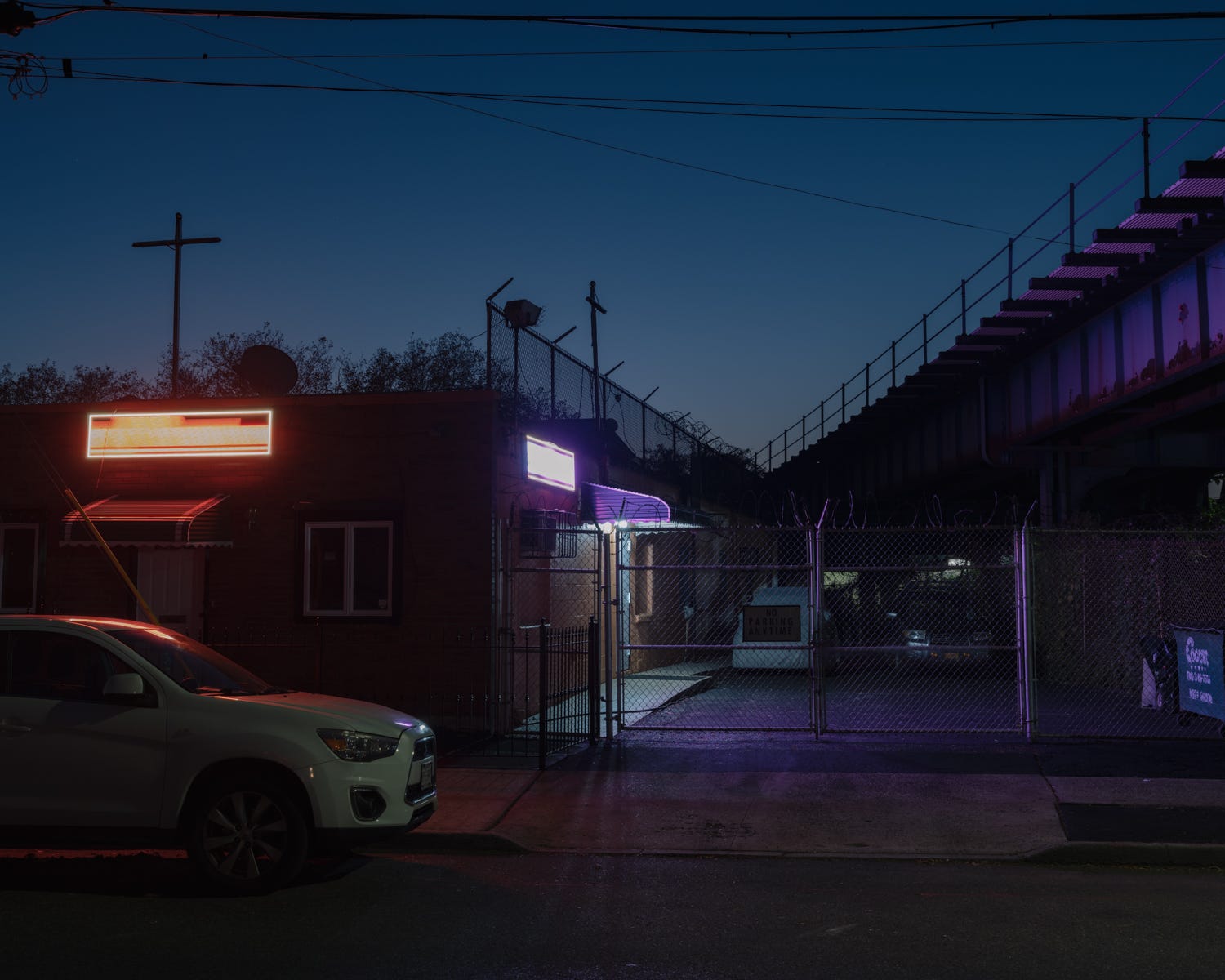
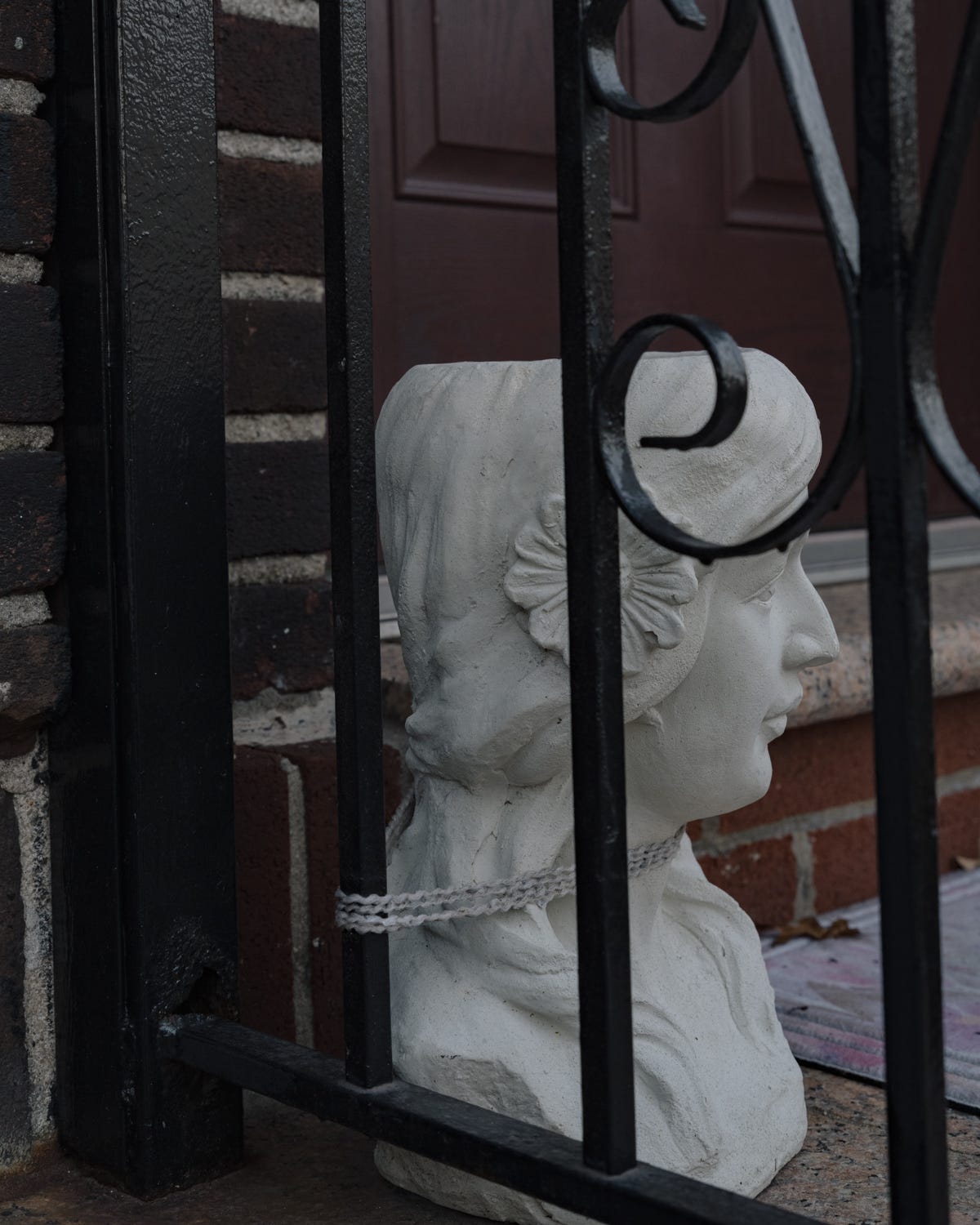
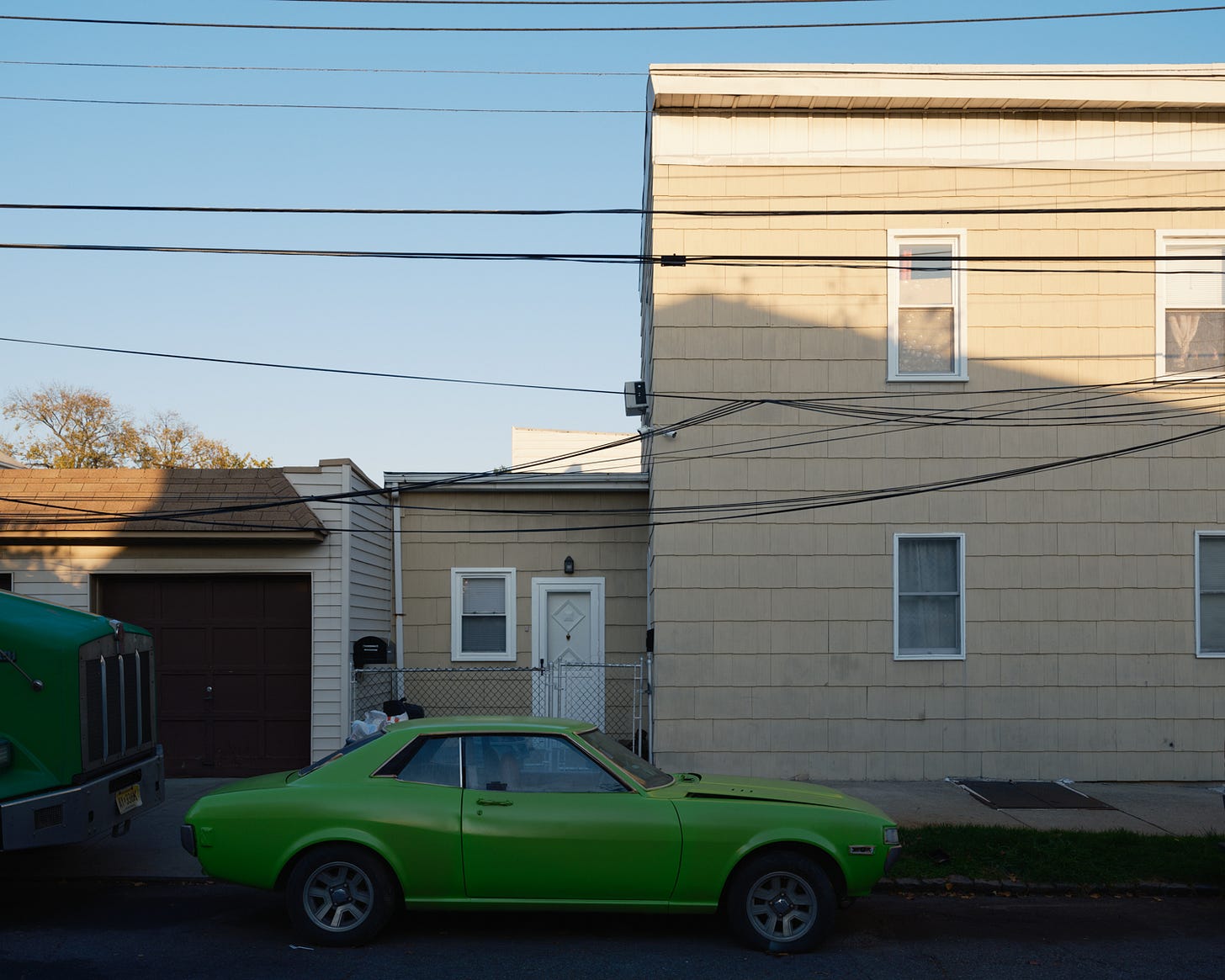
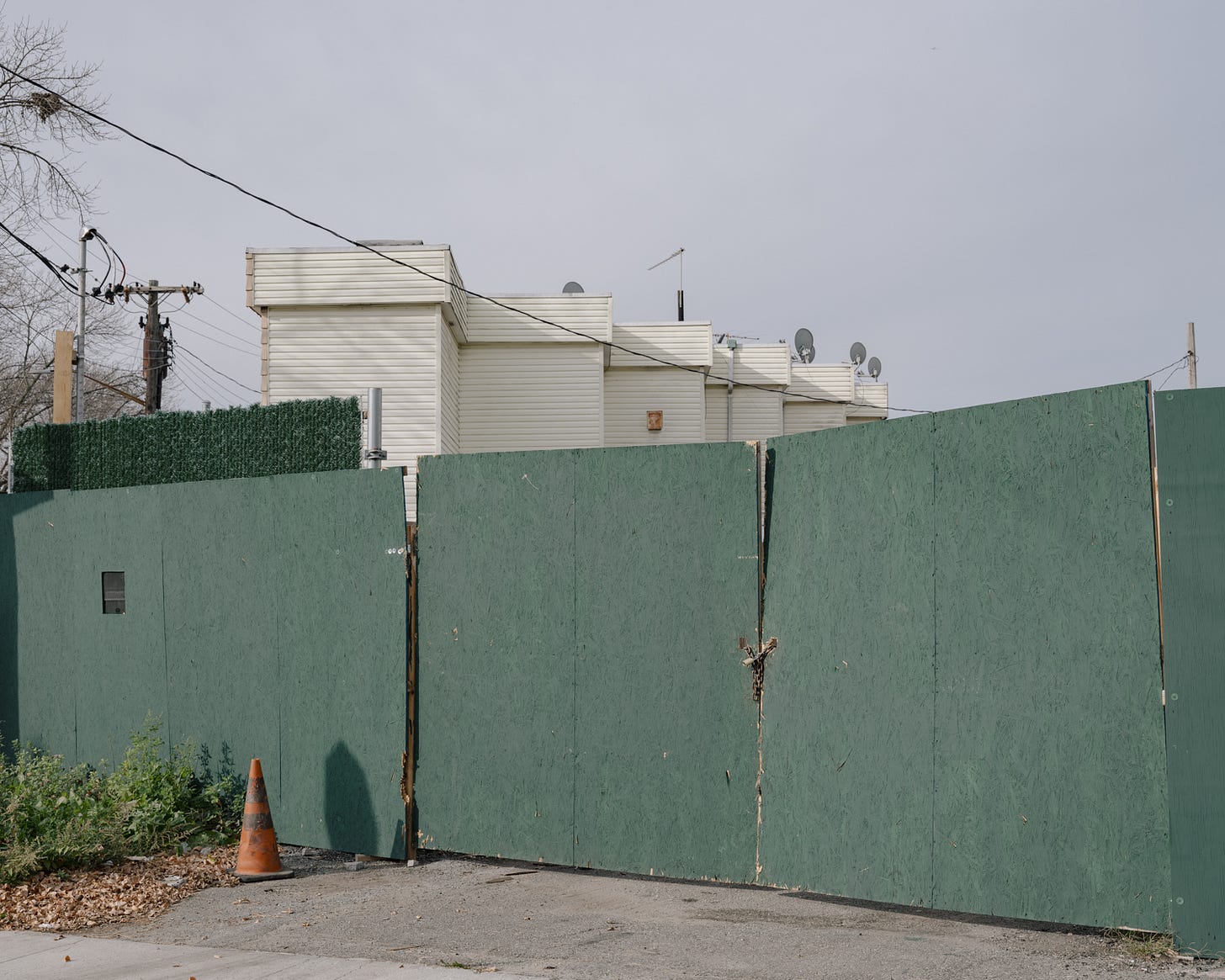
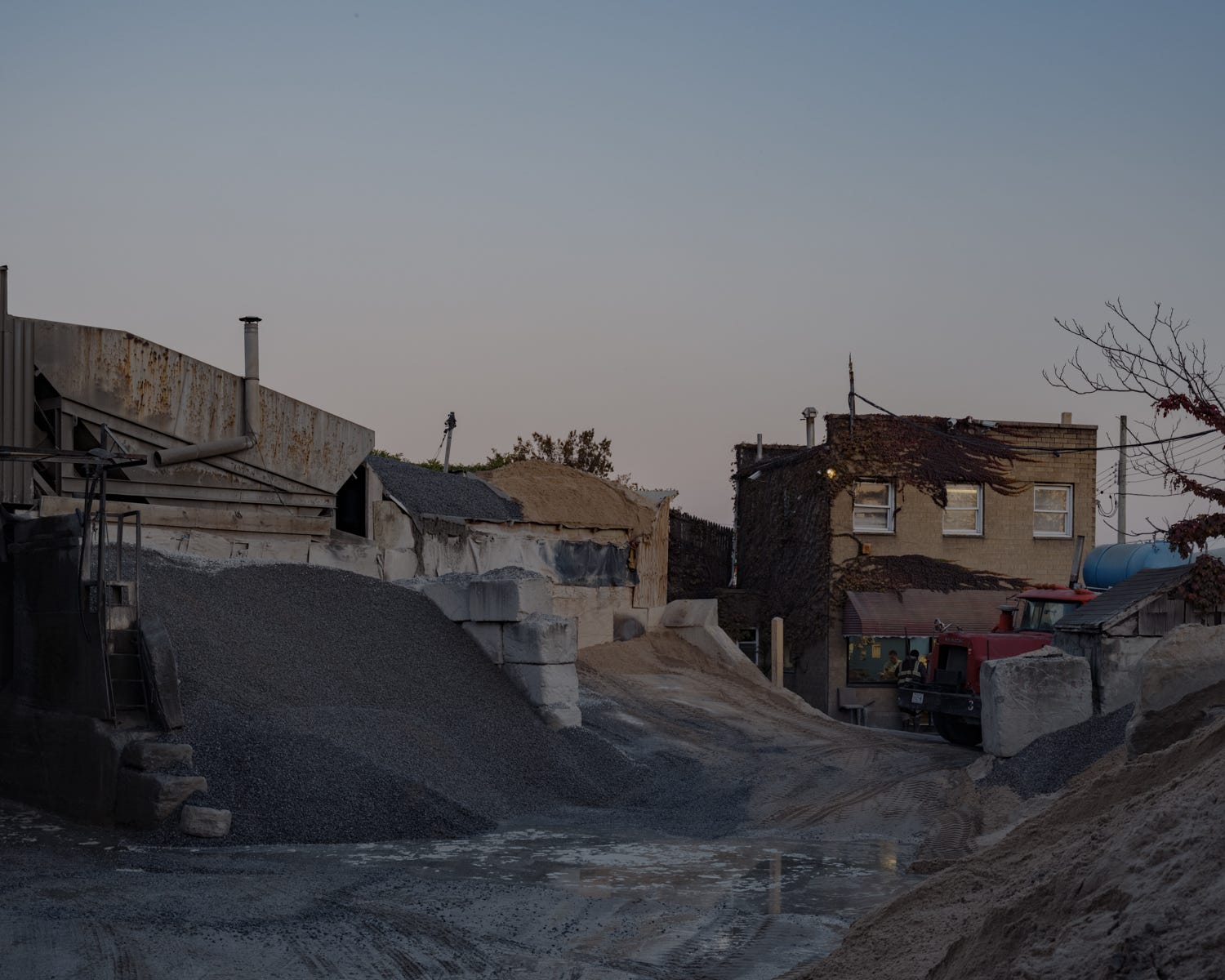
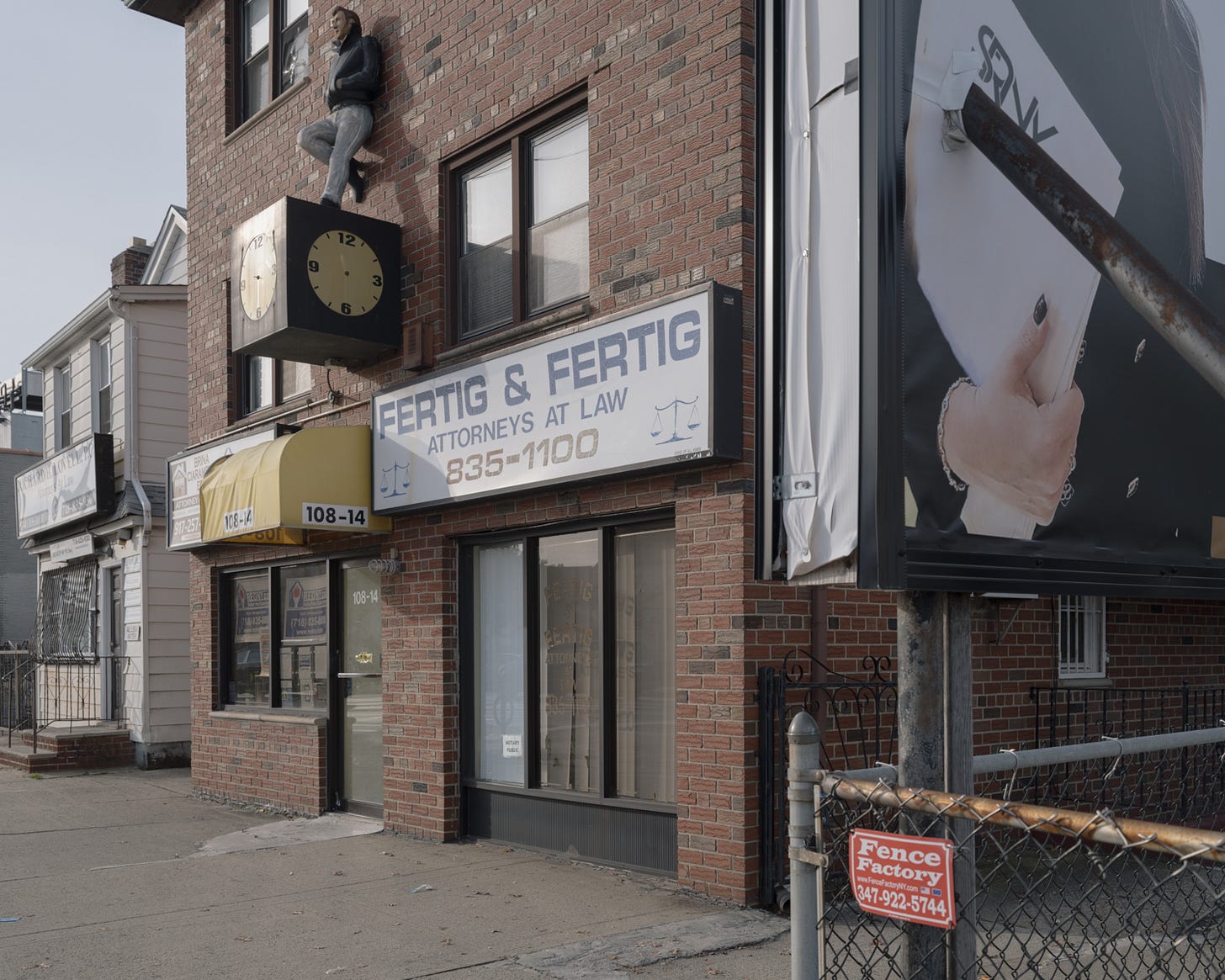
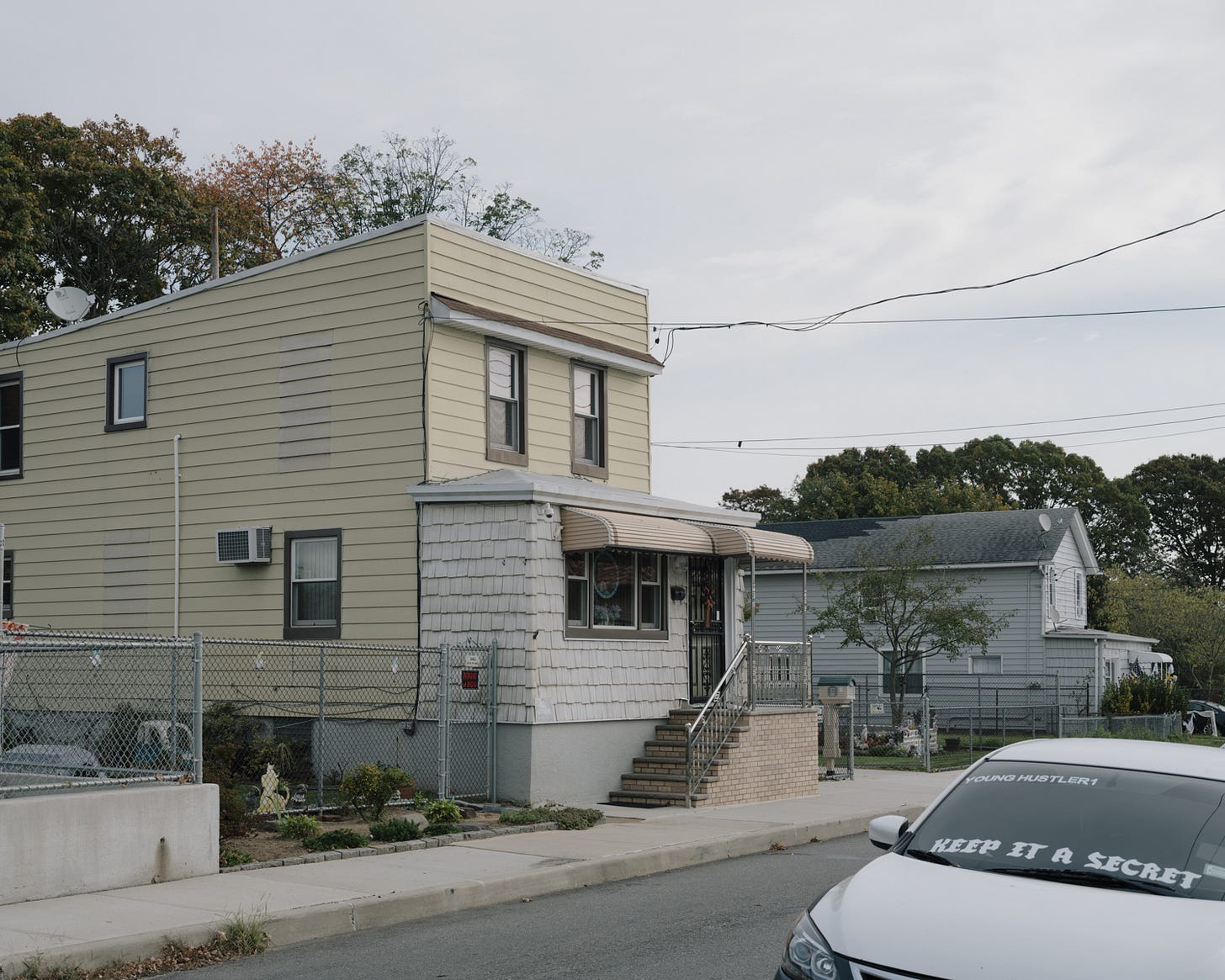
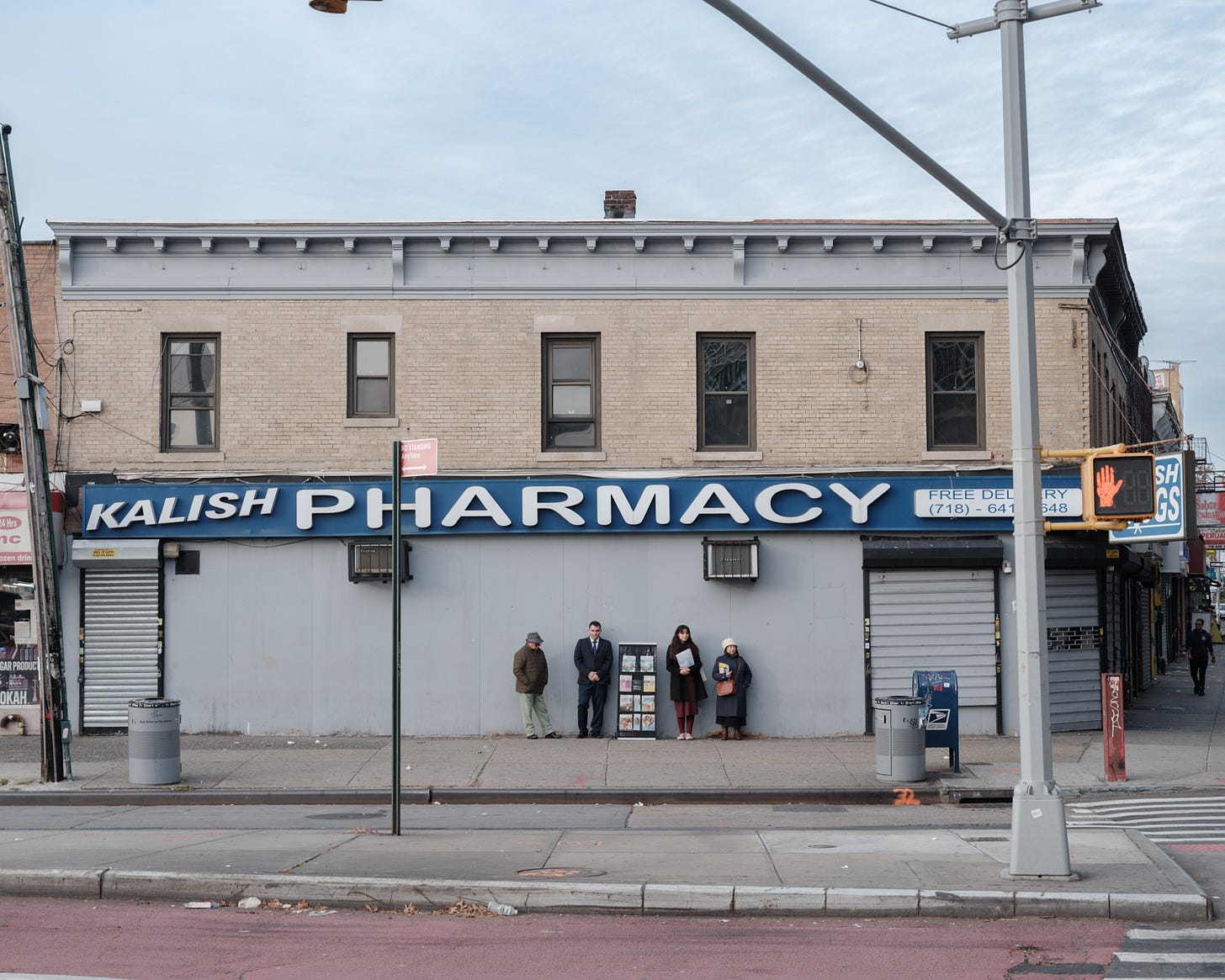
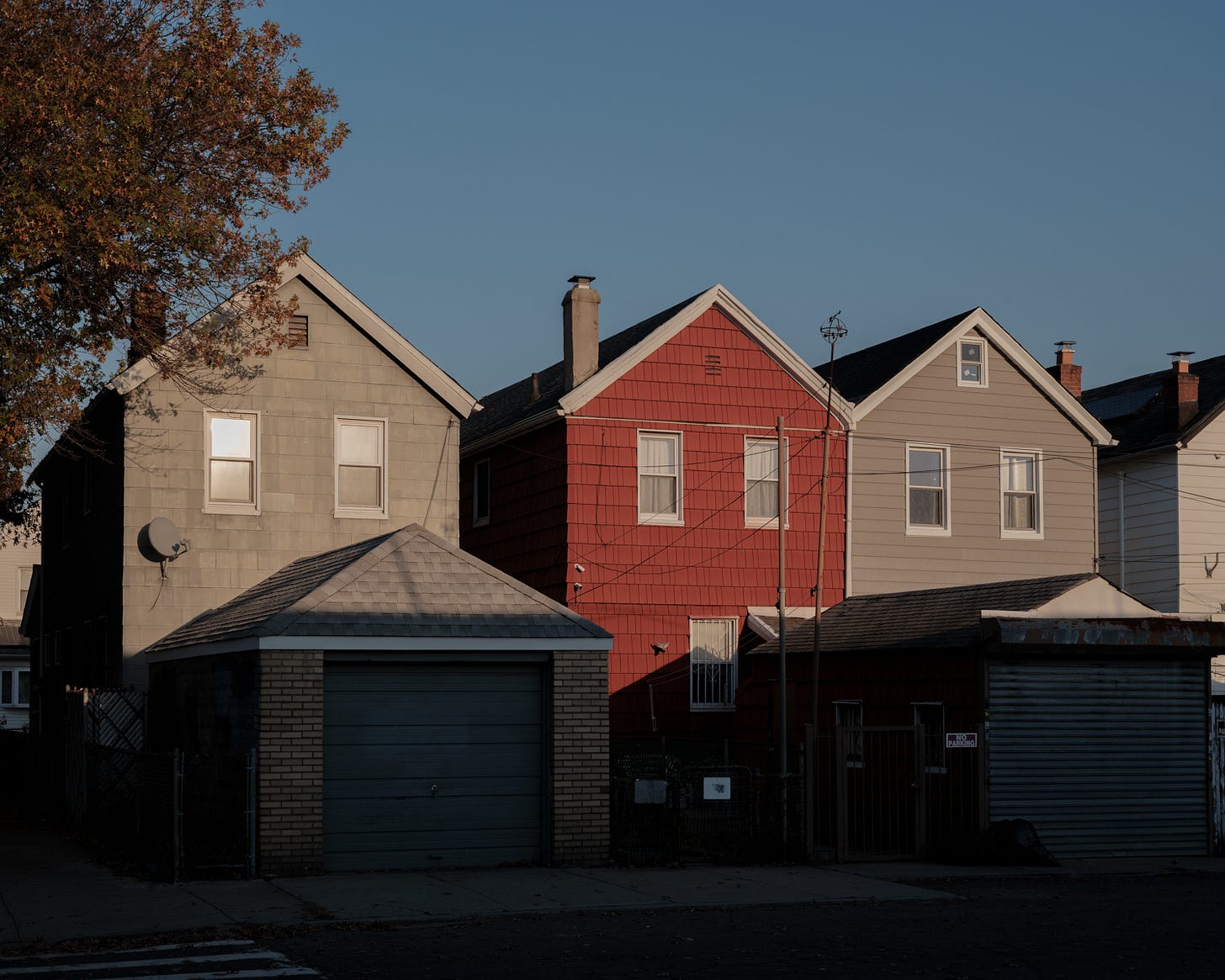
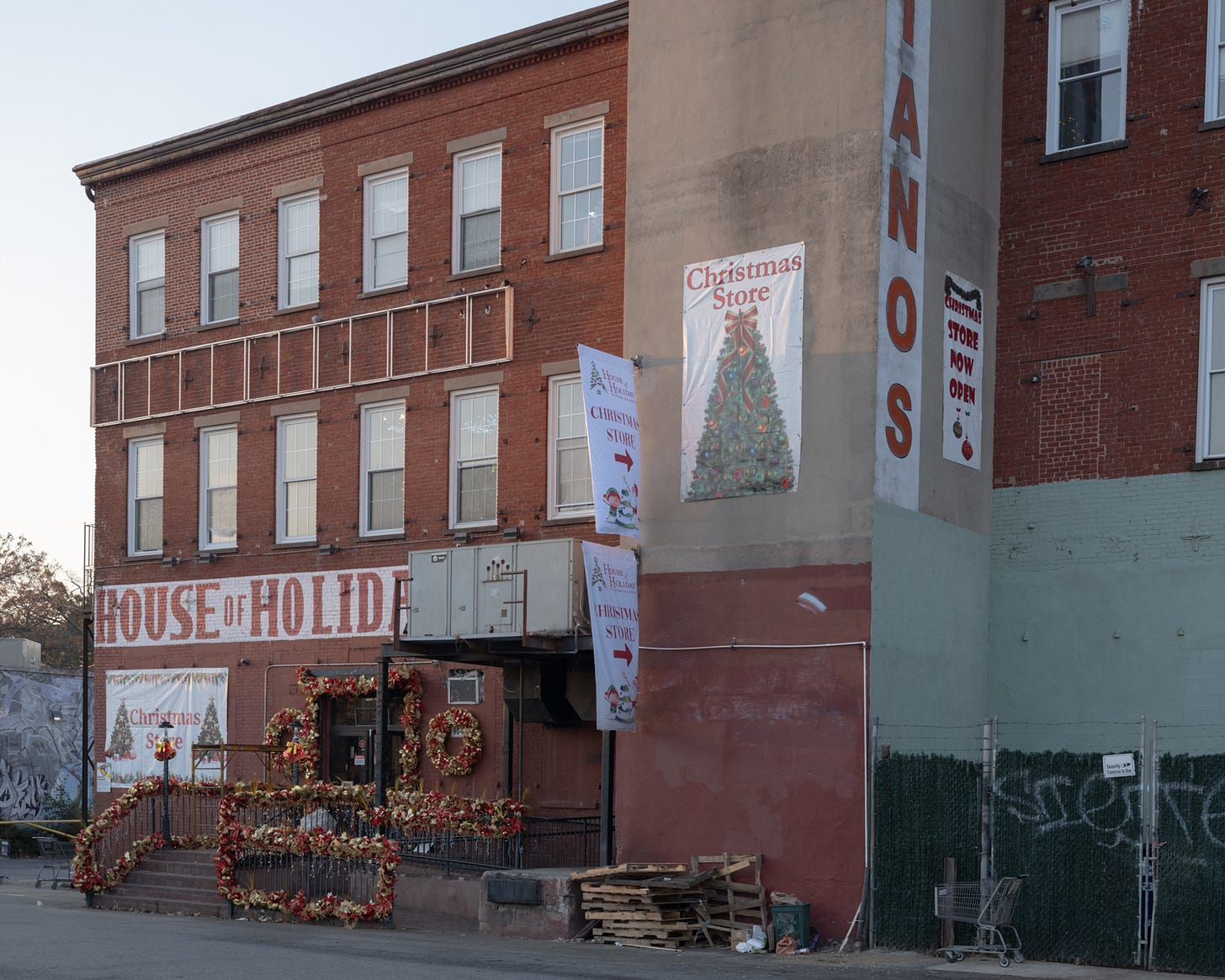

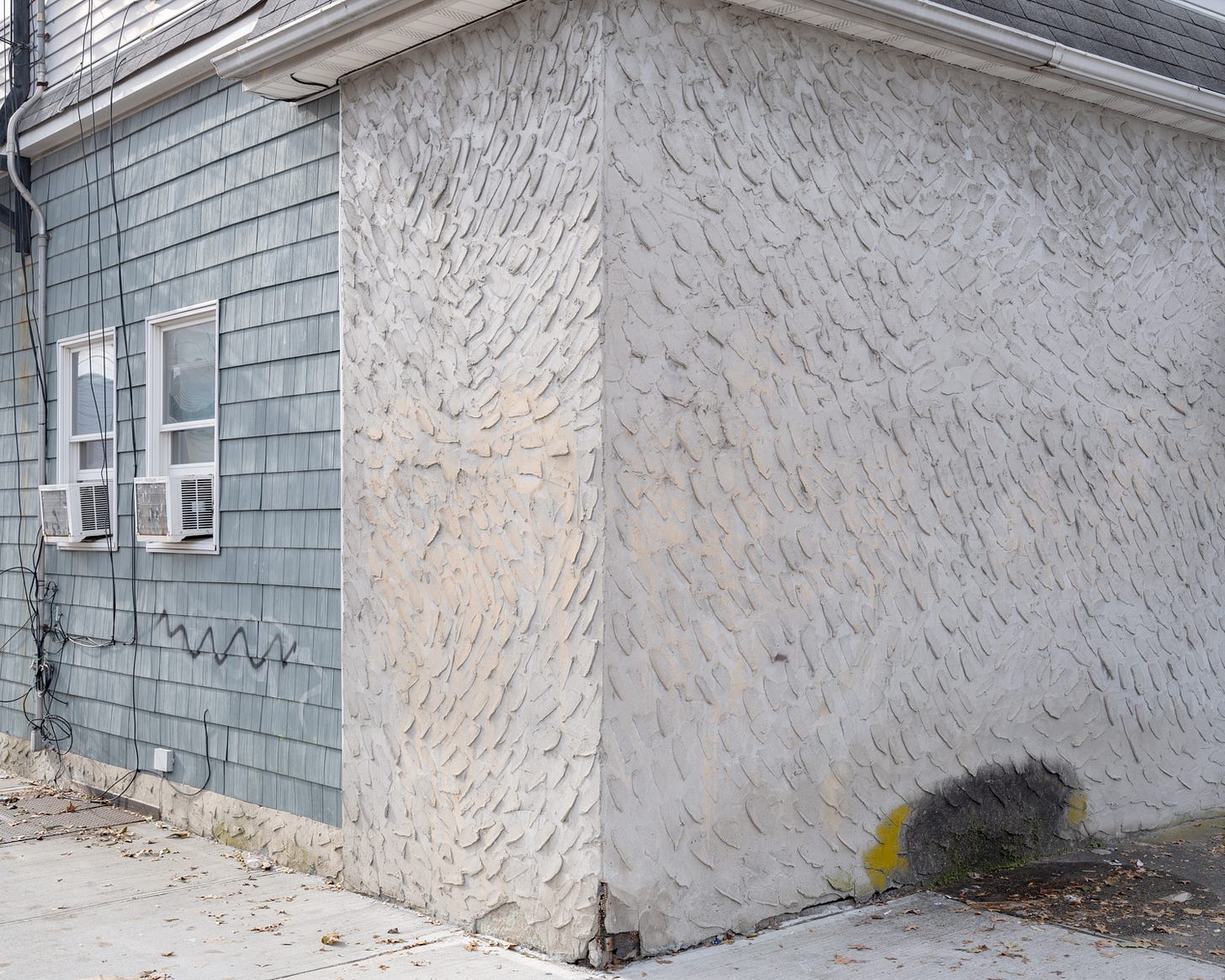
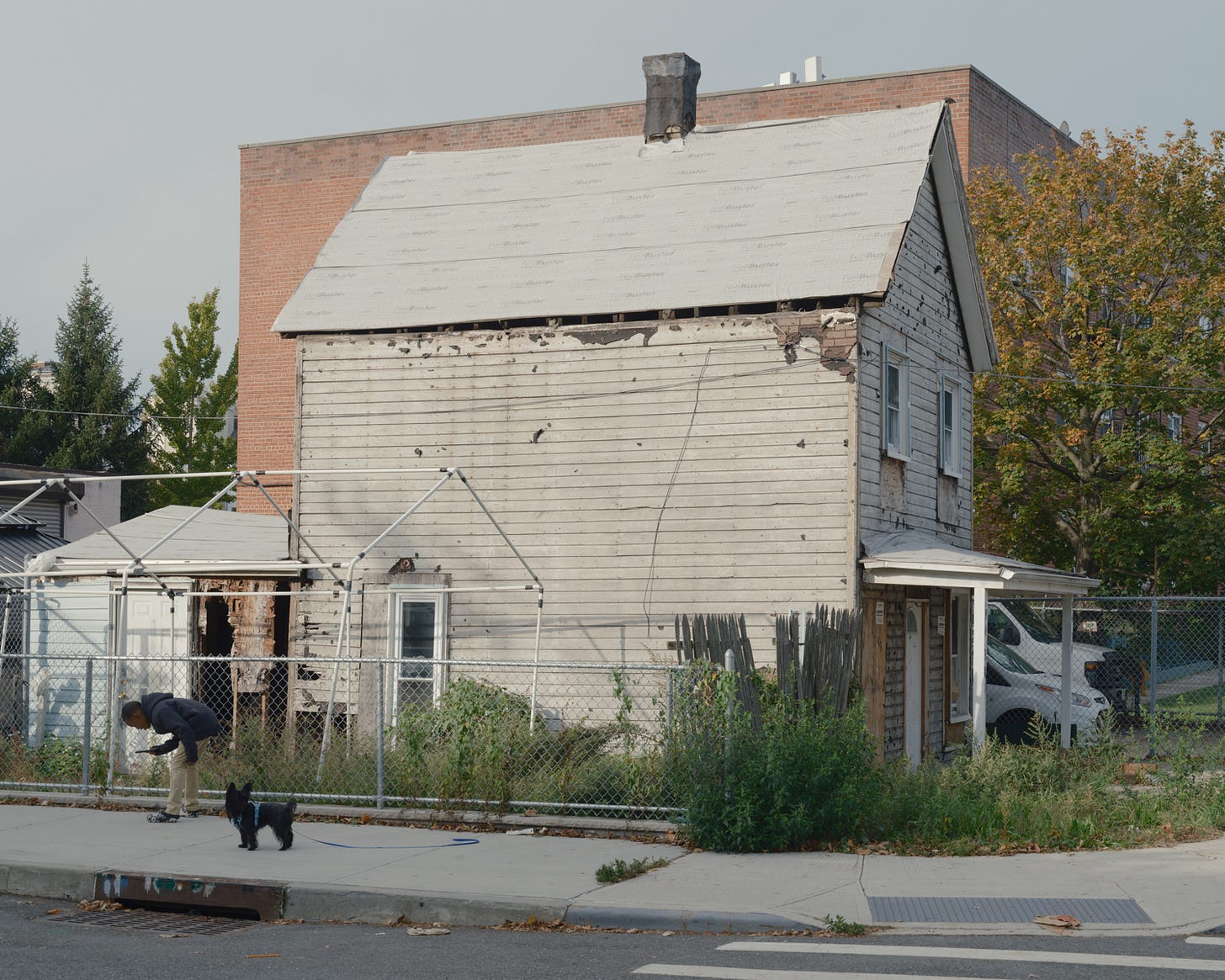
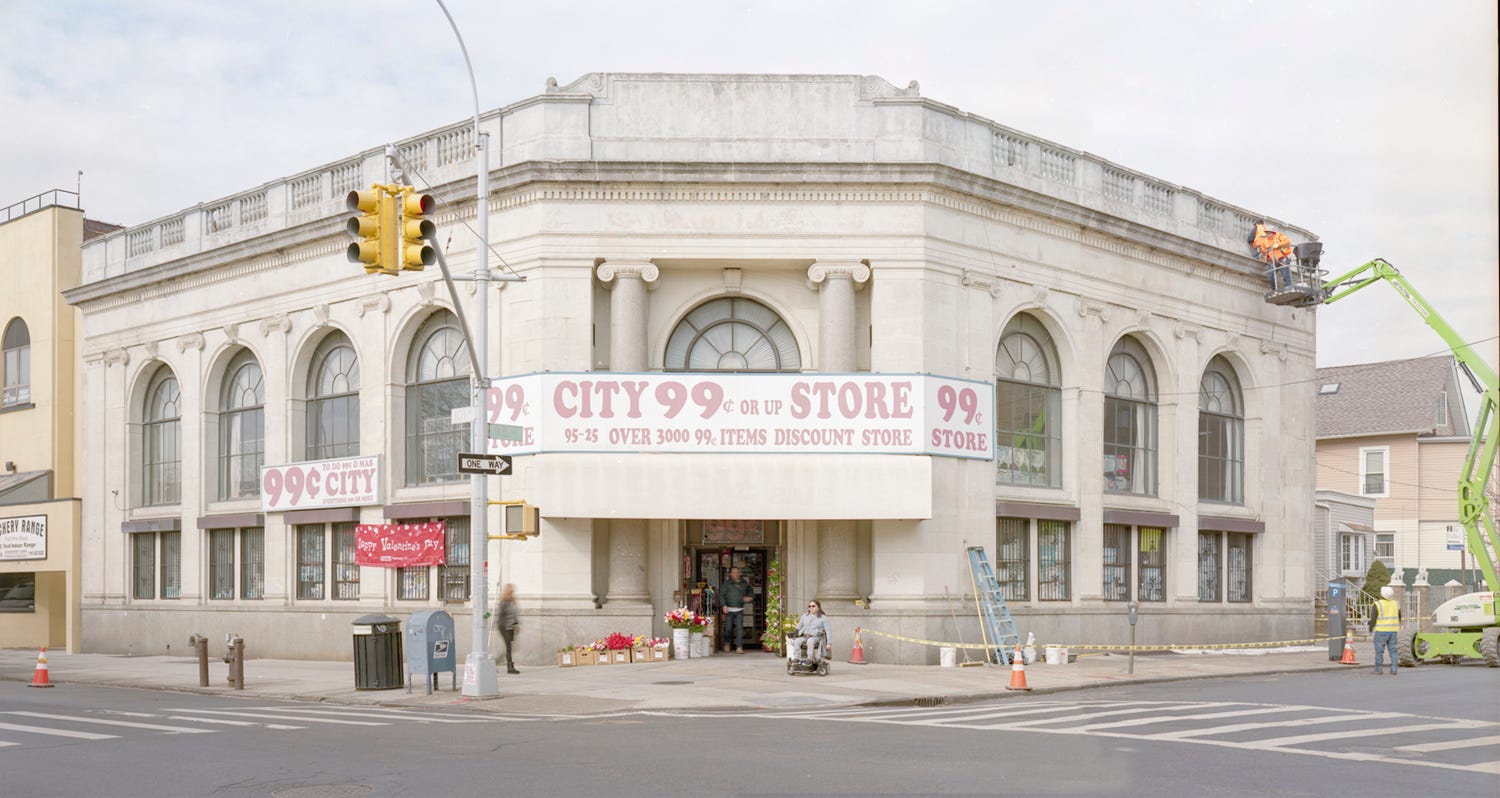
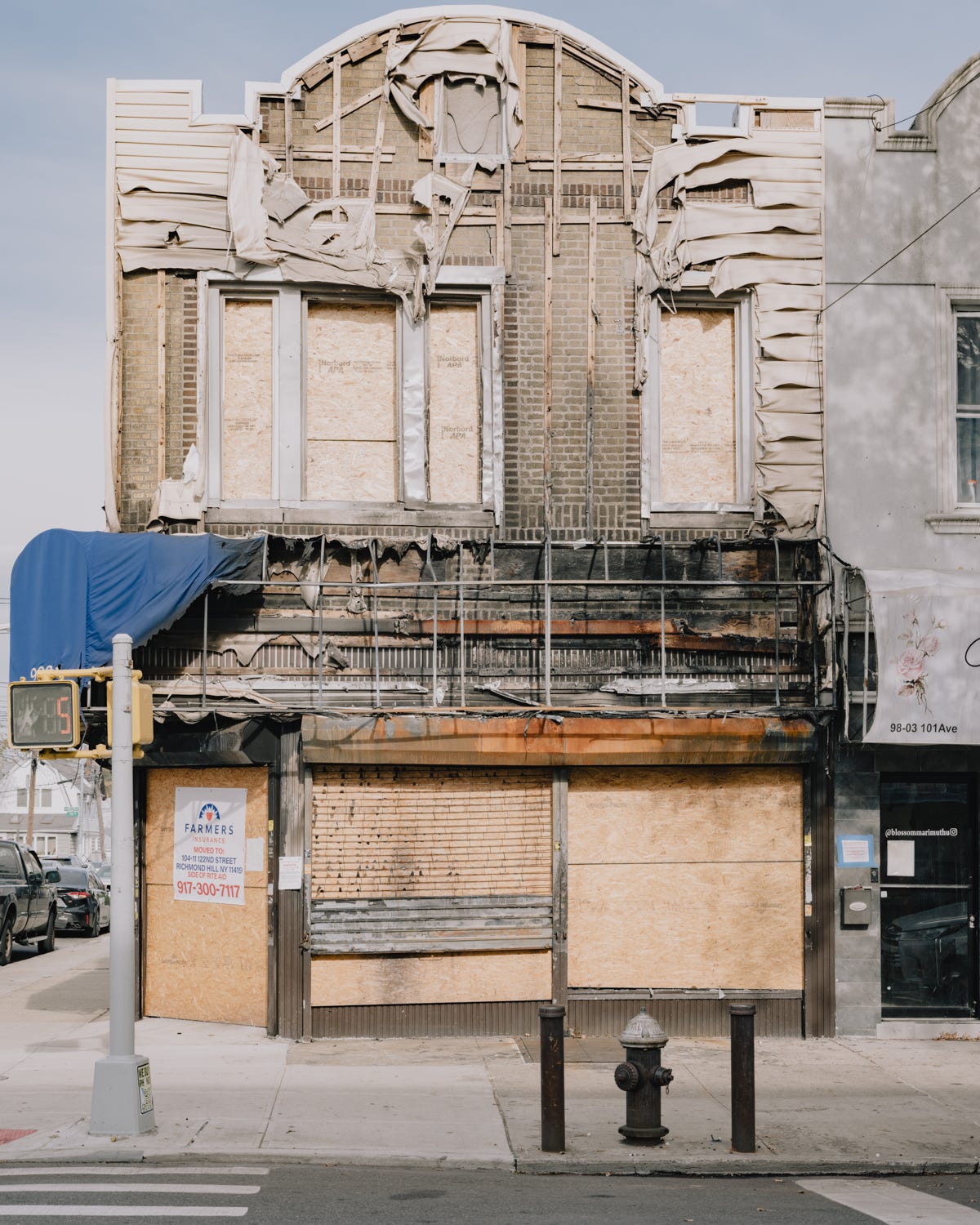
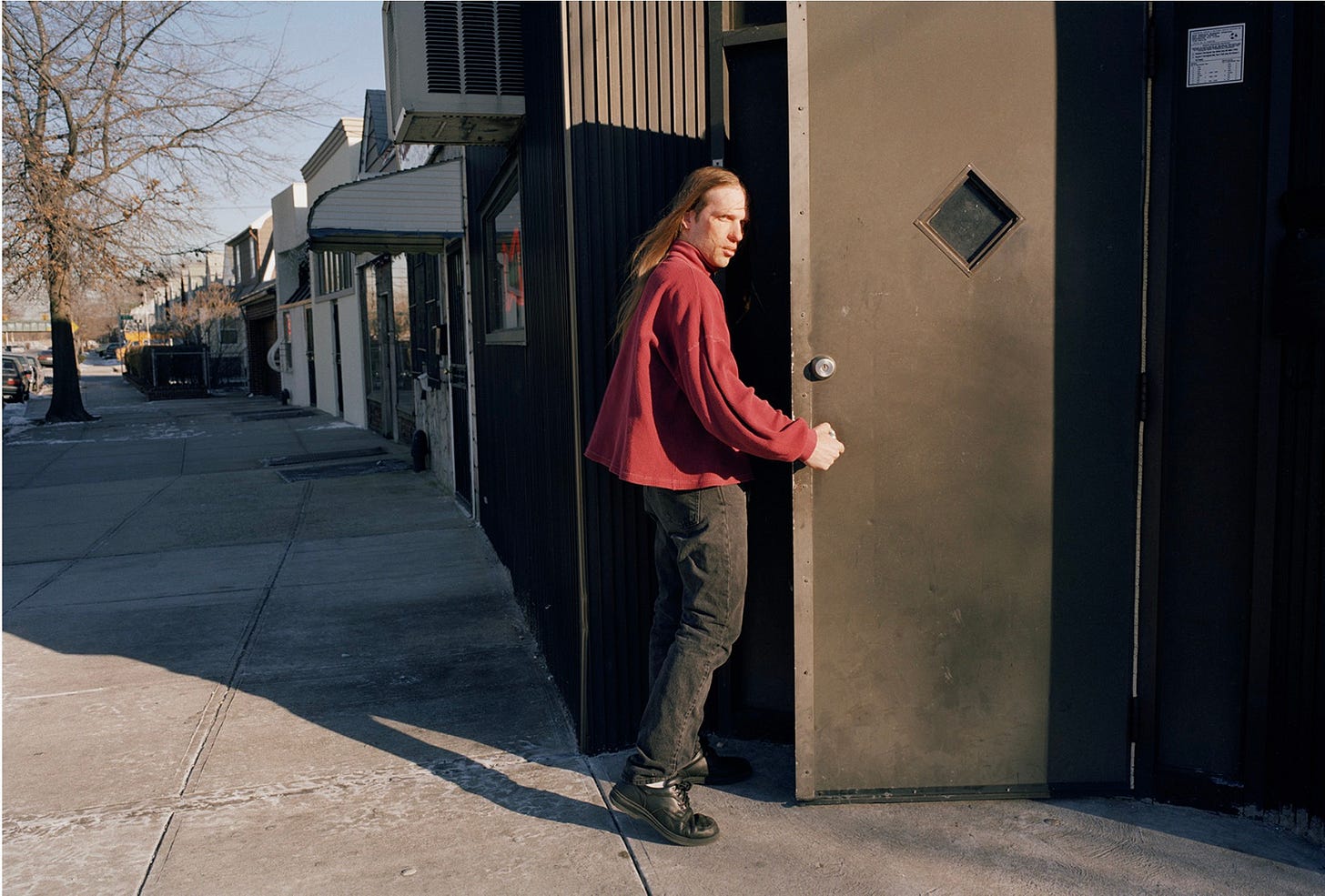
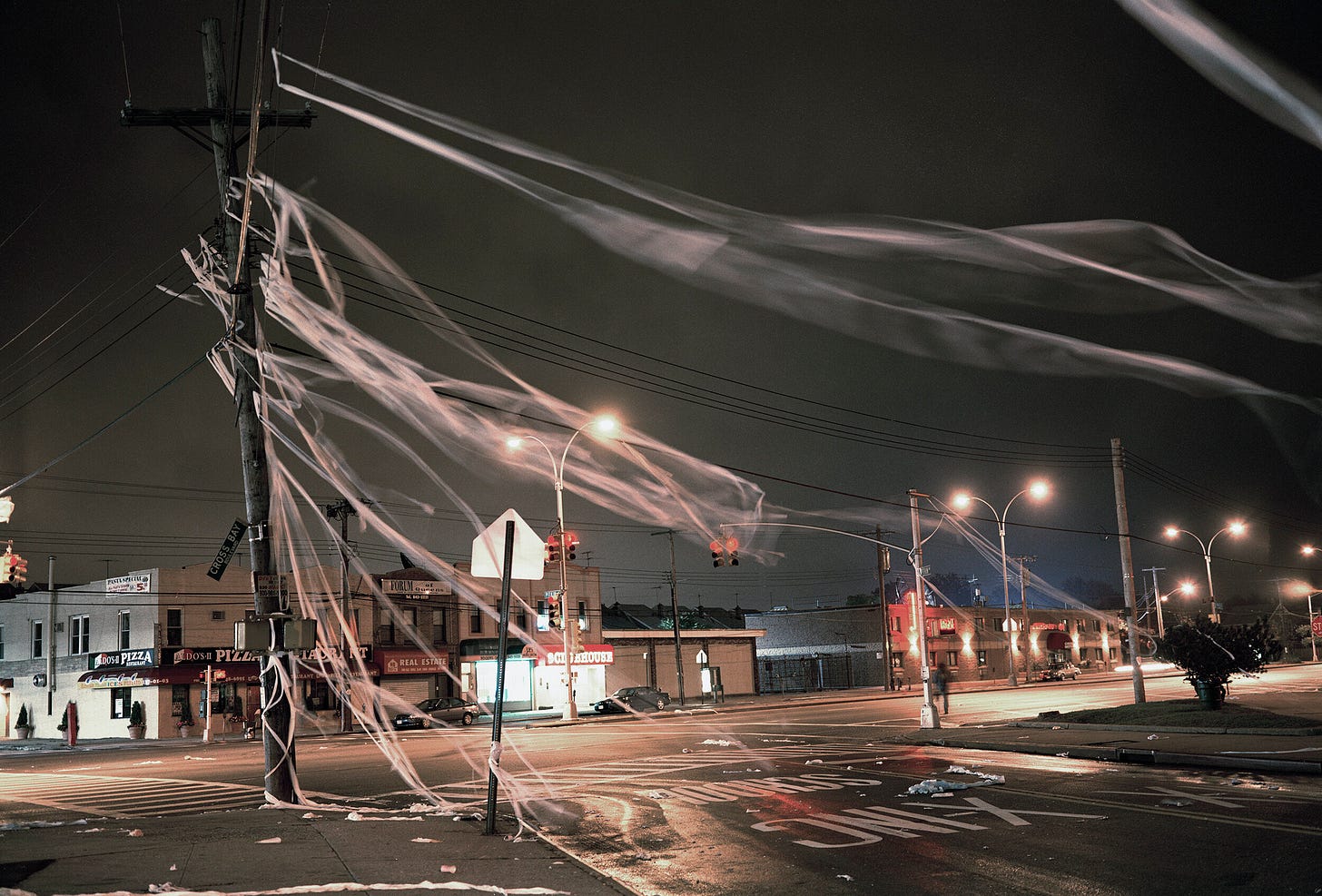
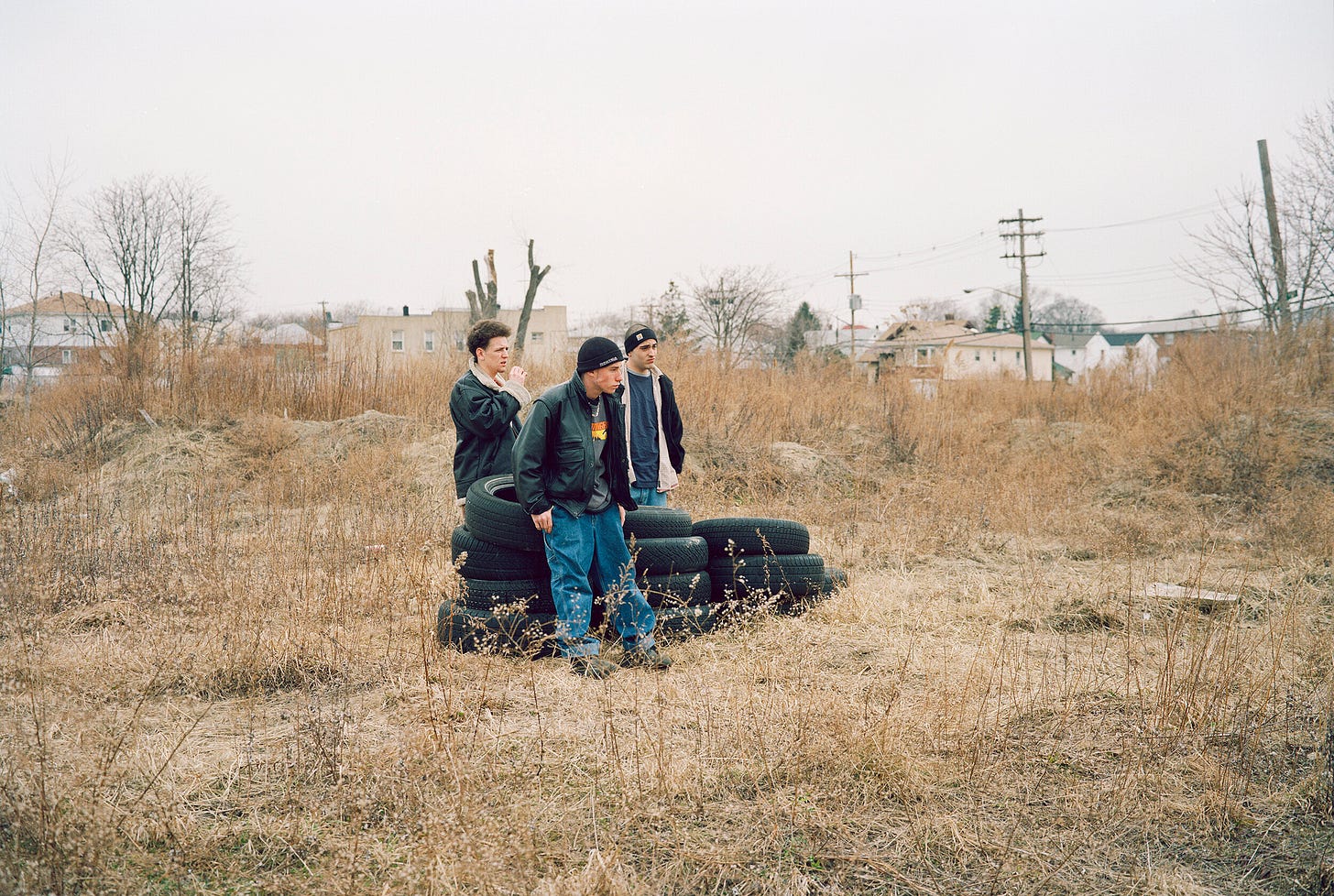
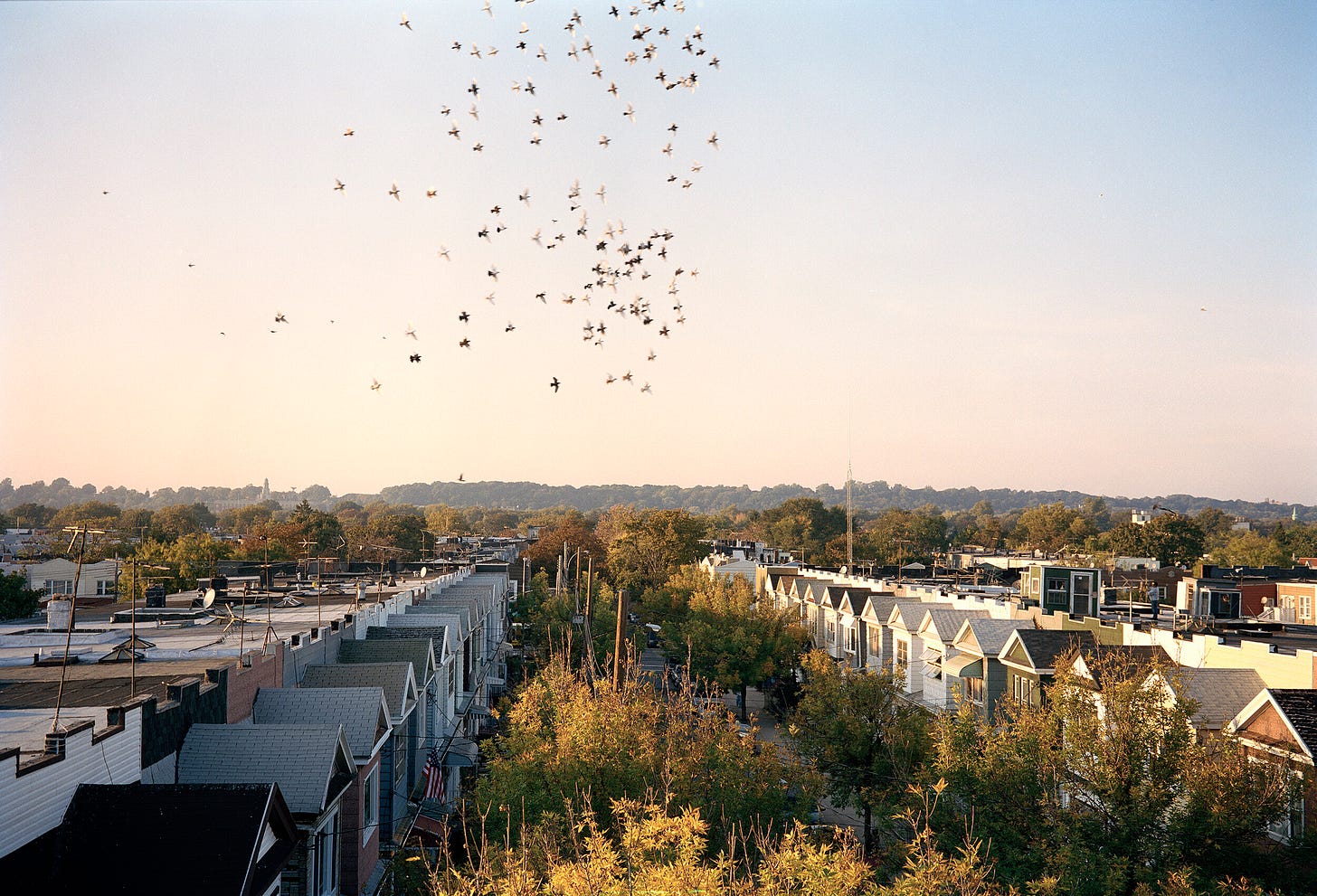
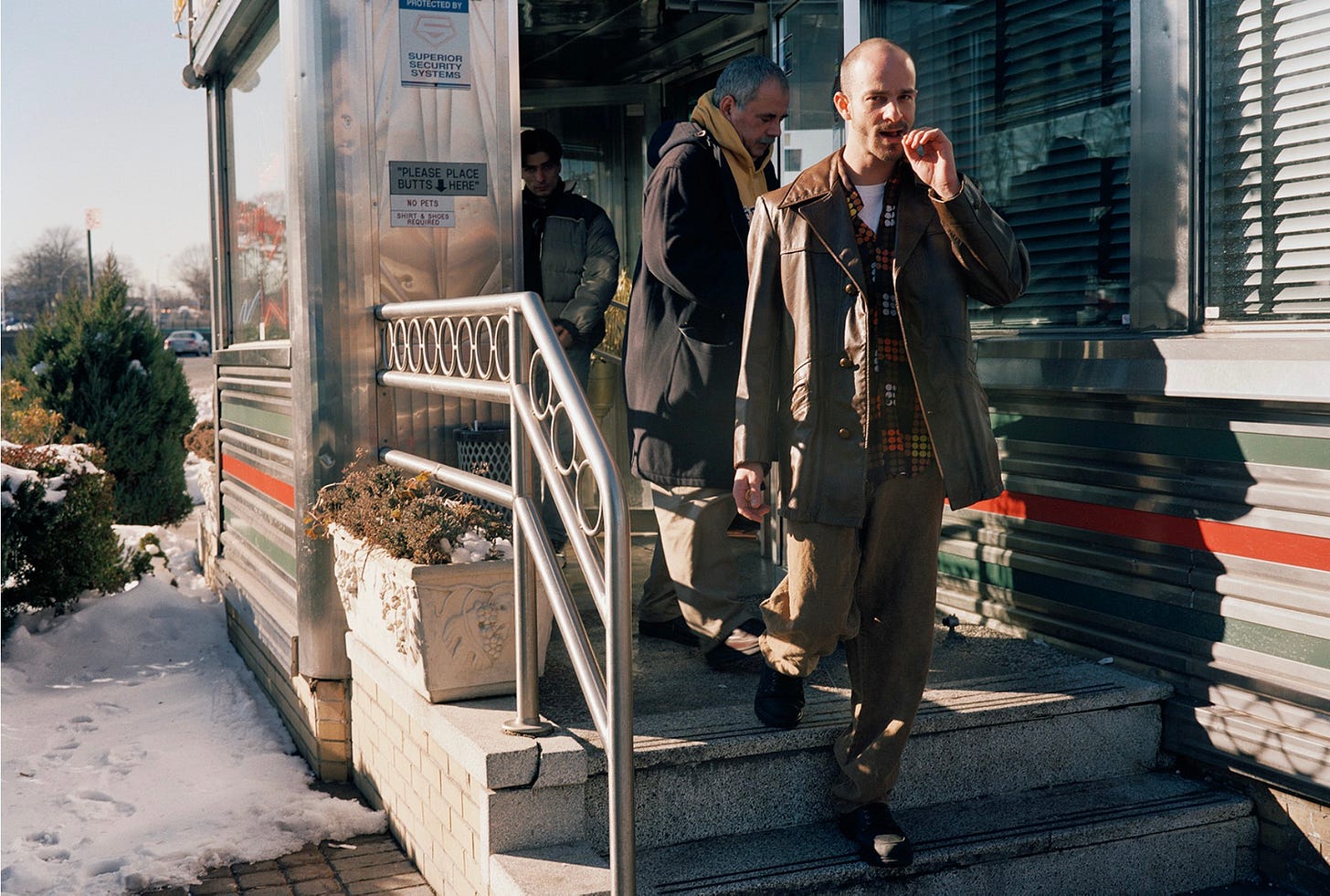
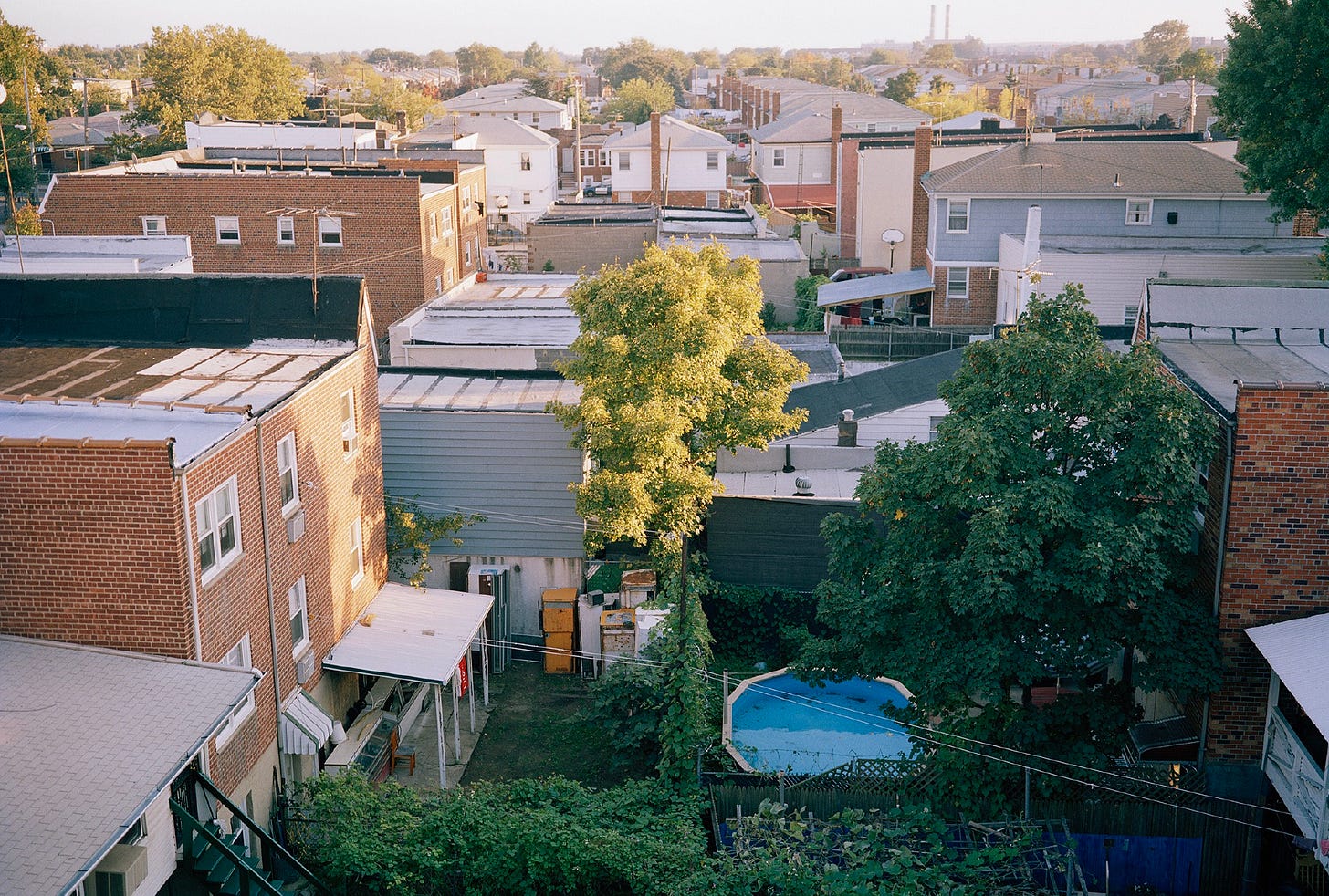
These are such incredible & interesting neighborhood deep dives! I look forward to every one. Thank you!
thank YOU! Love the images and this week's pocketful of history and humour ! And thank you for introducing me to Katie Murray's beautiful work...